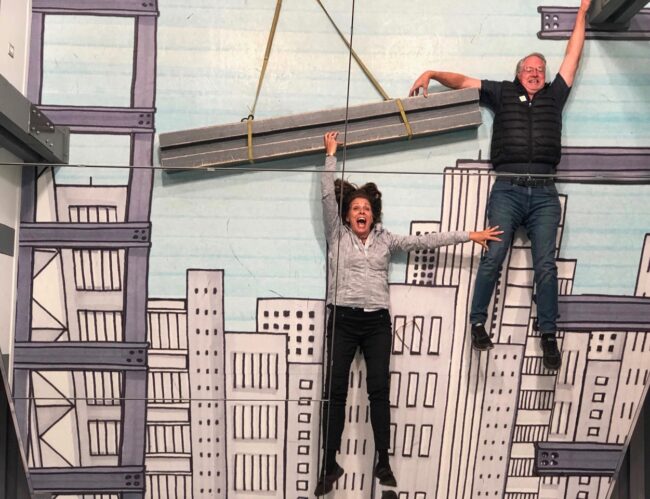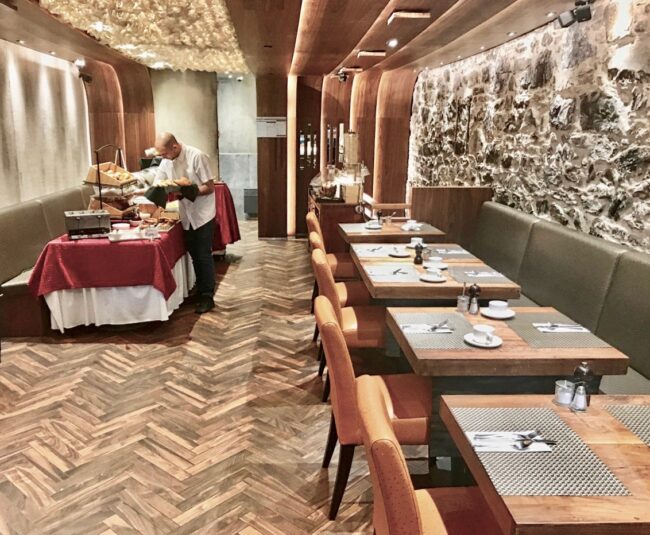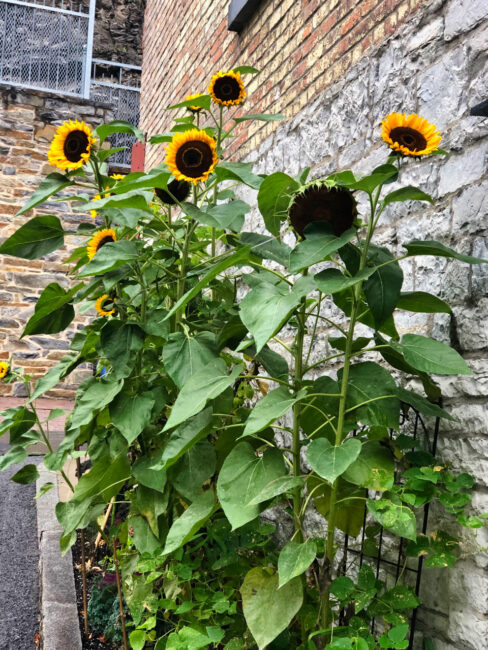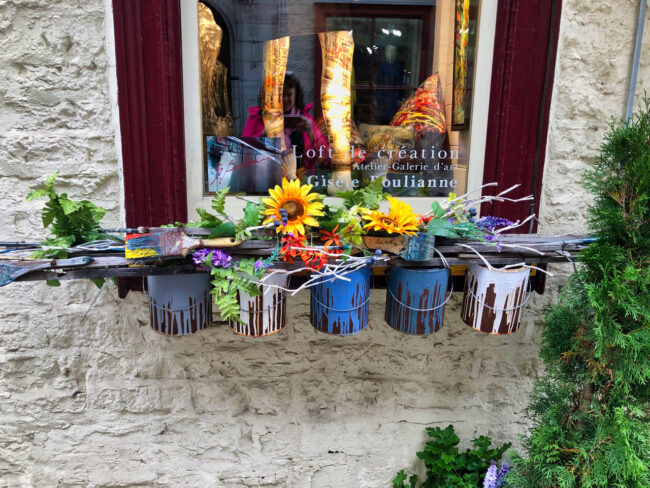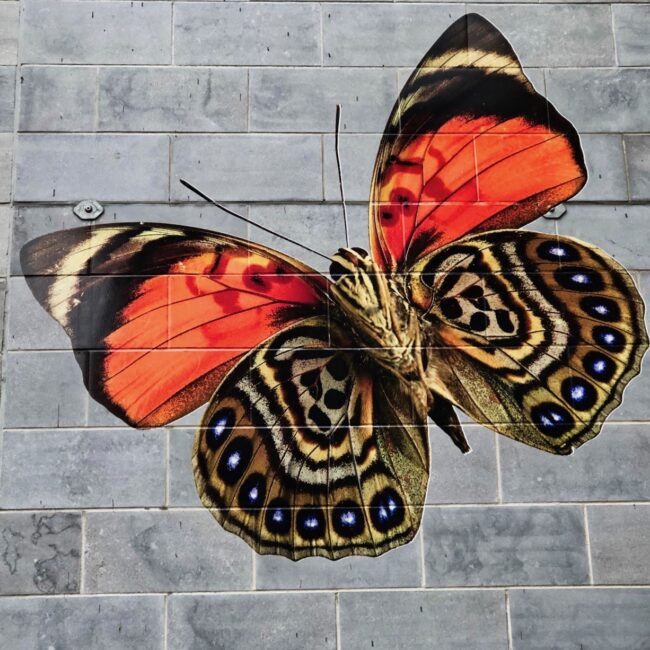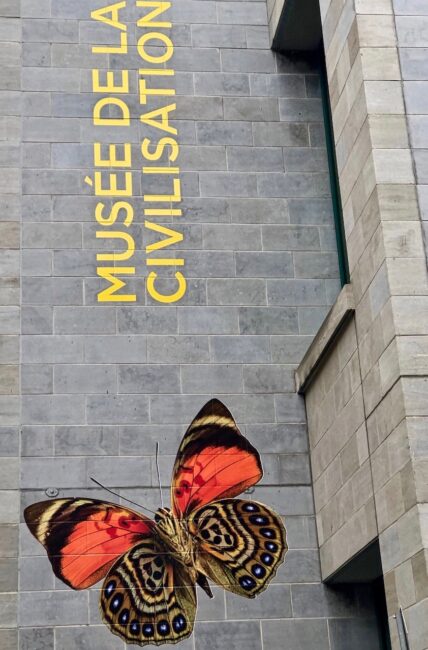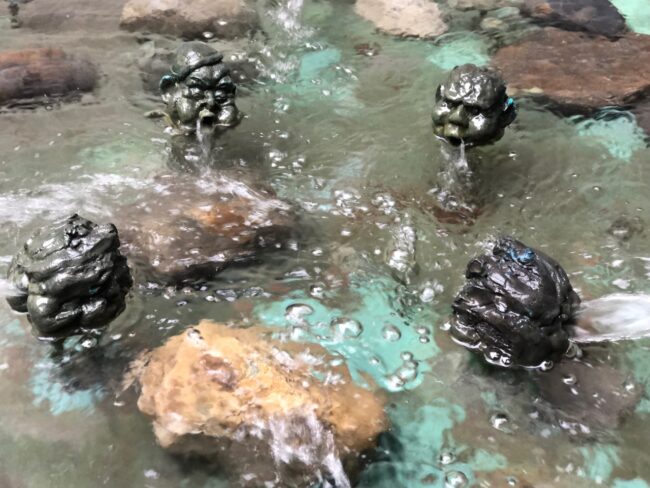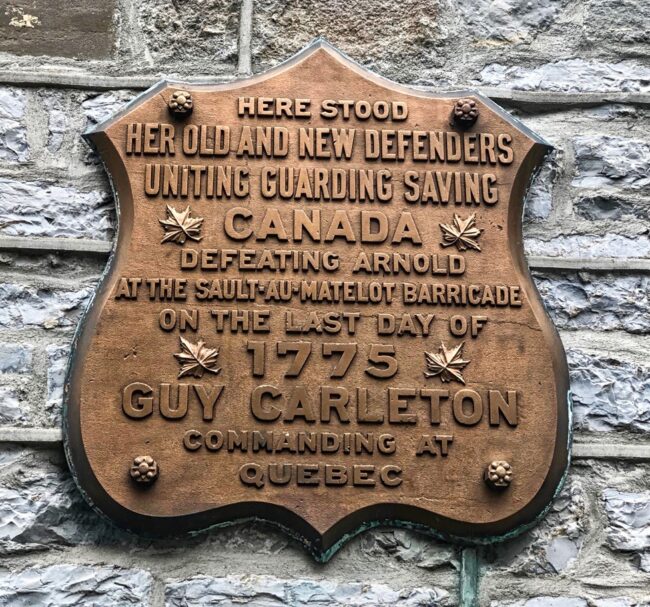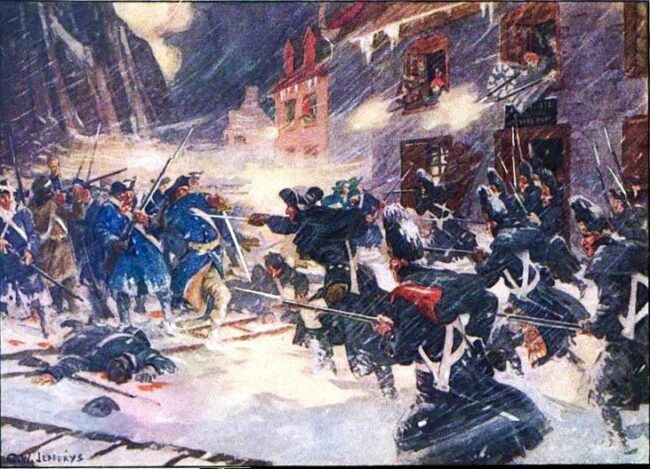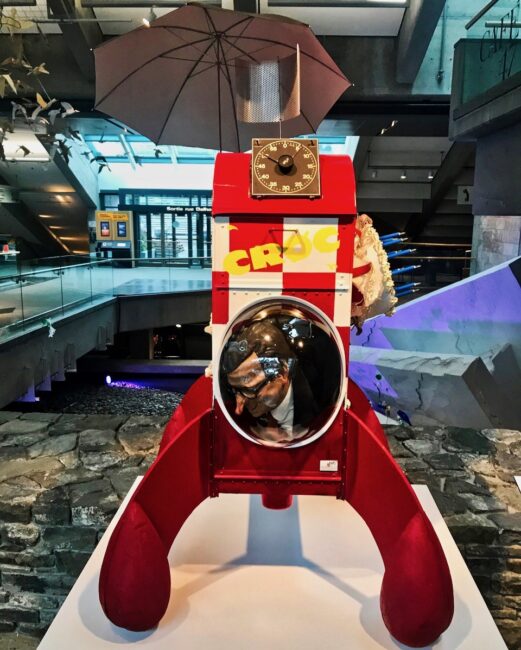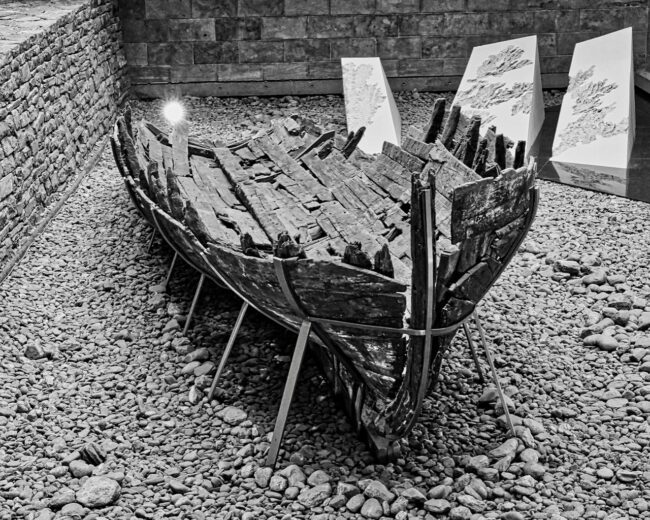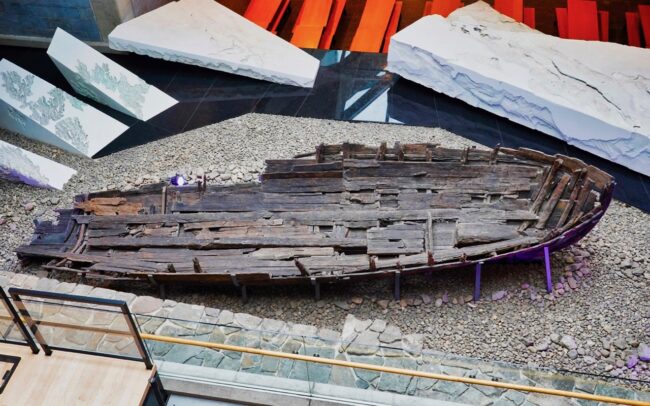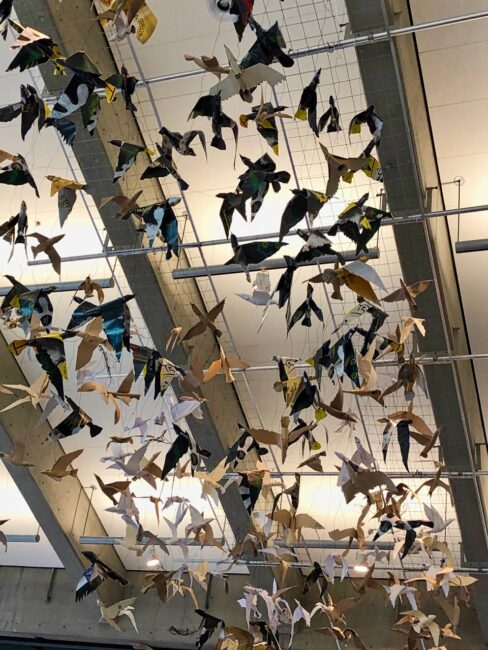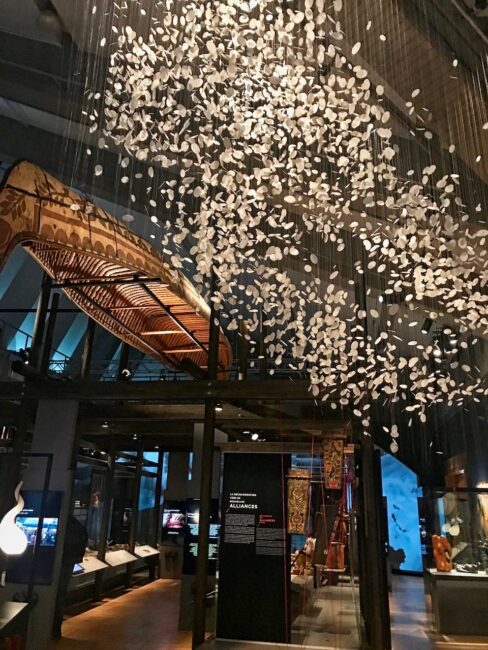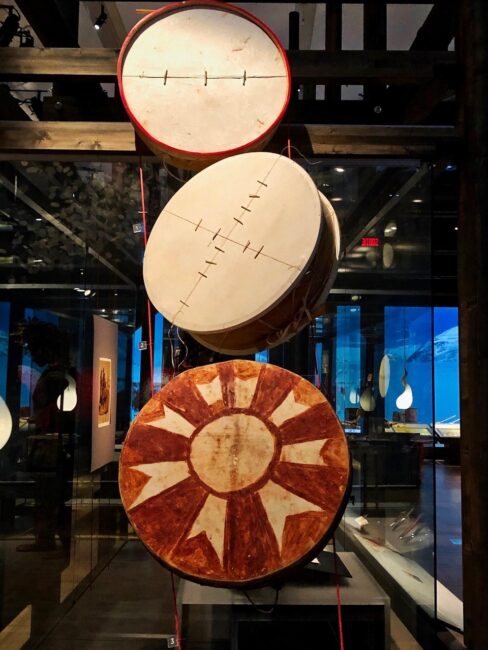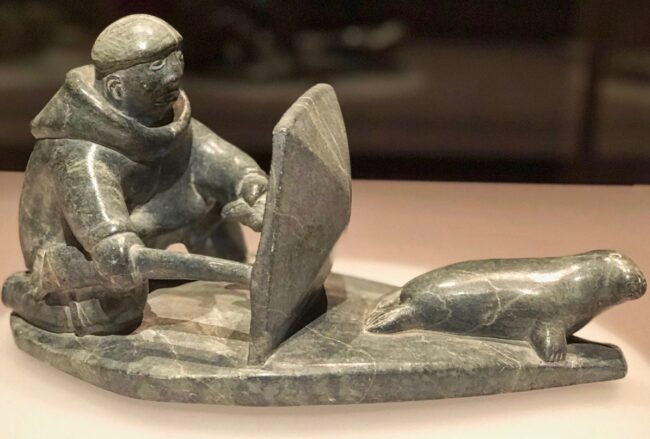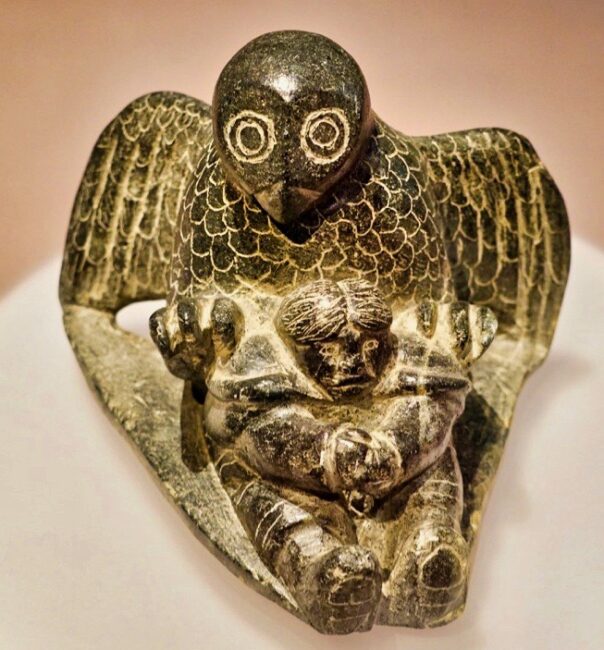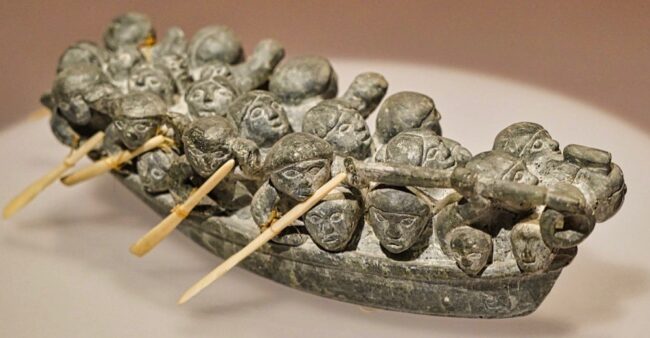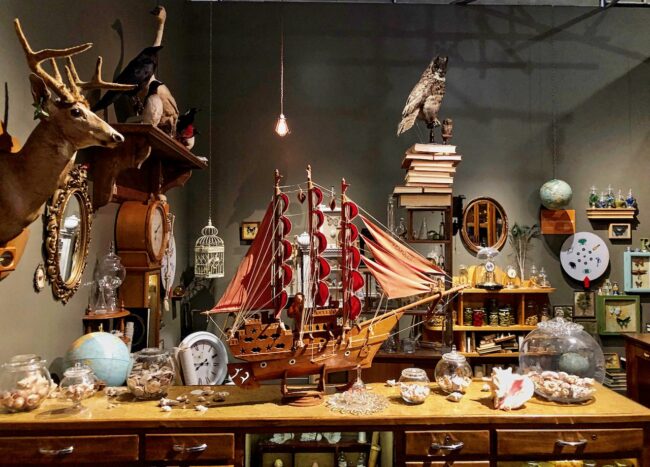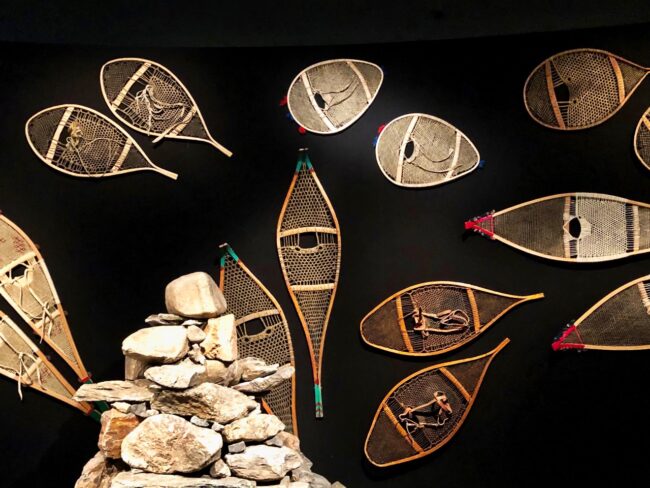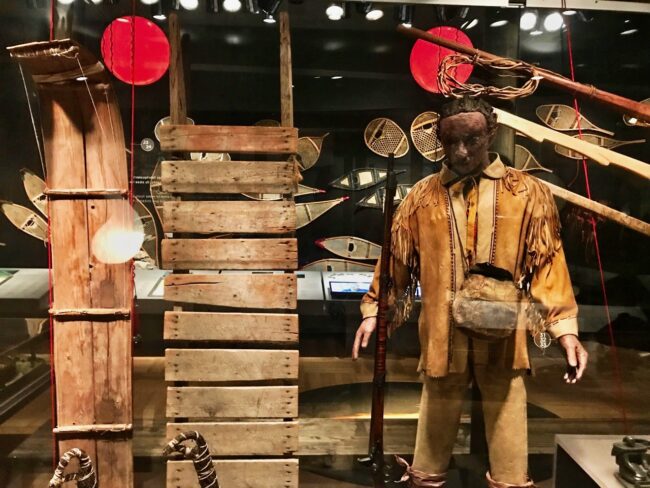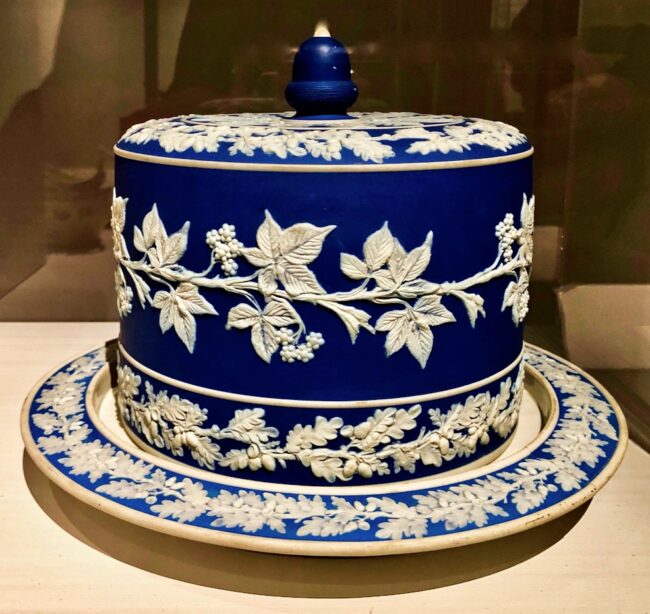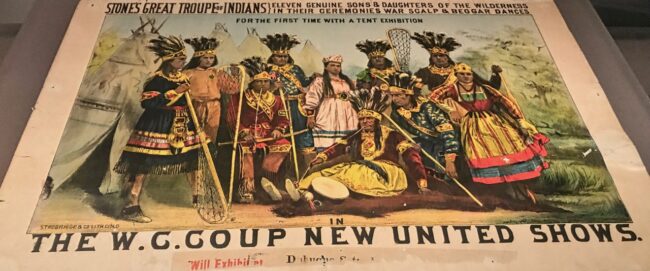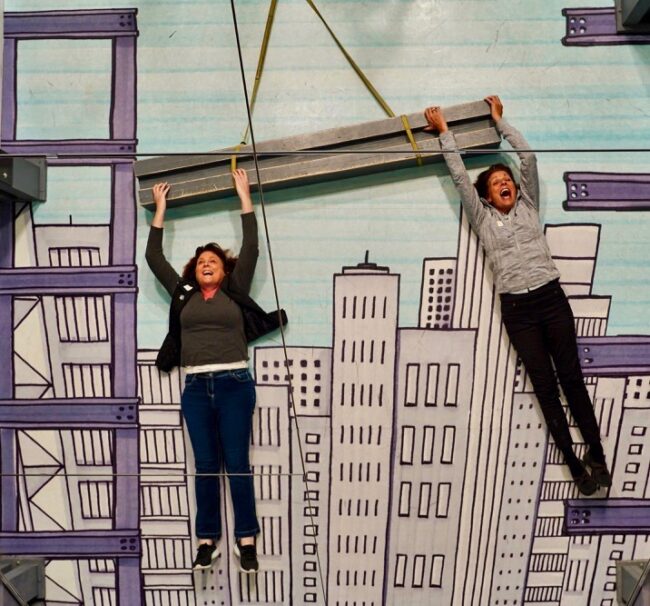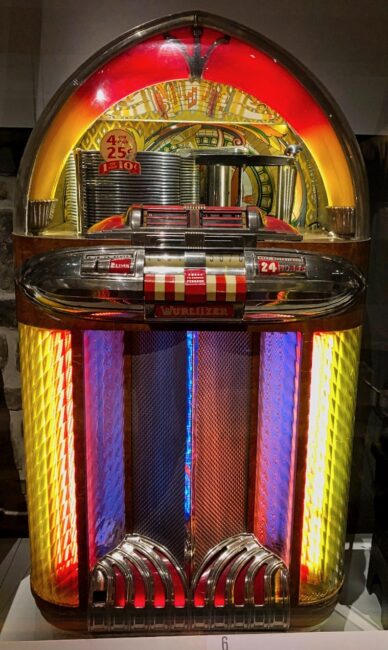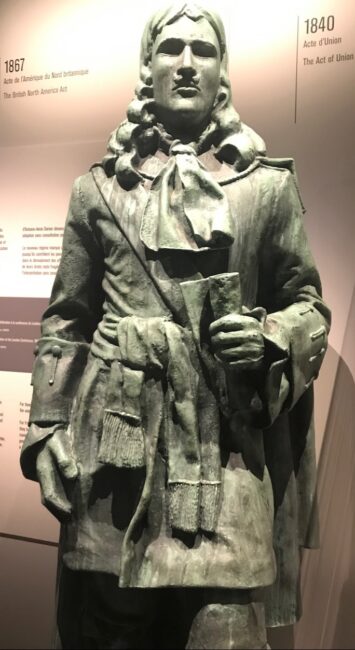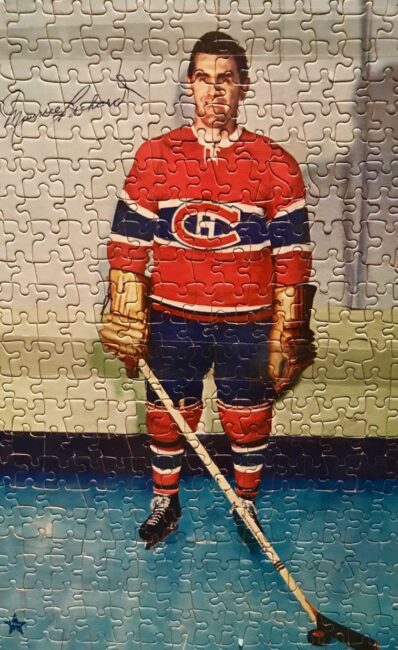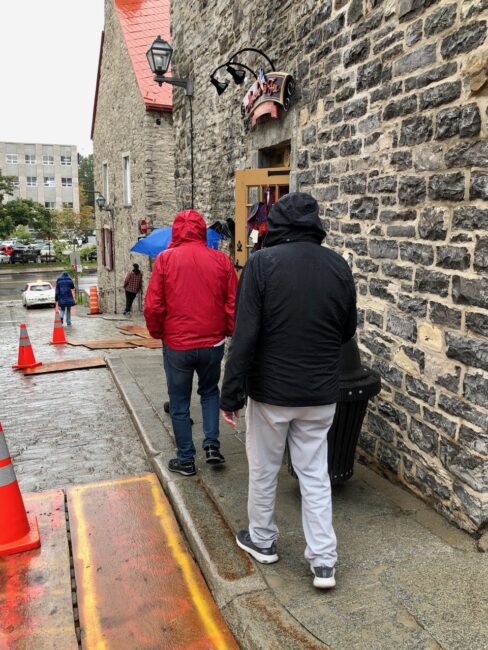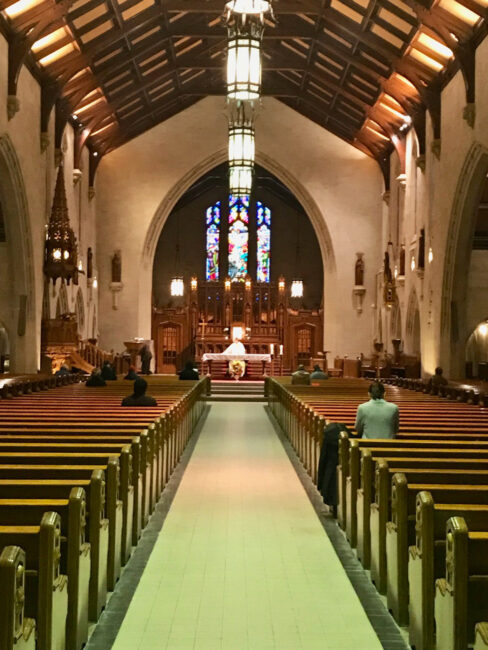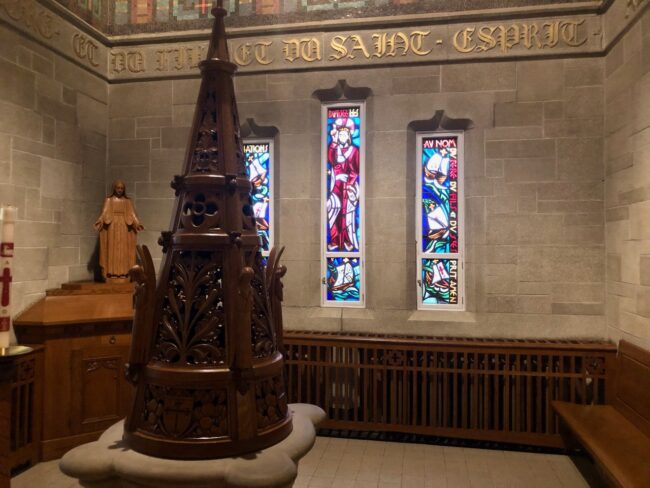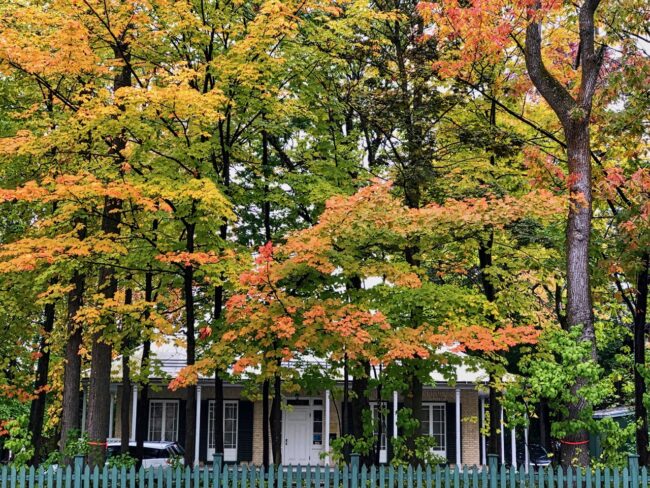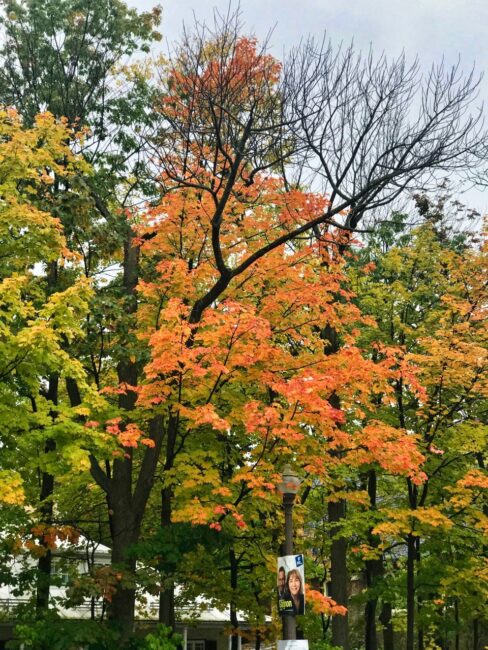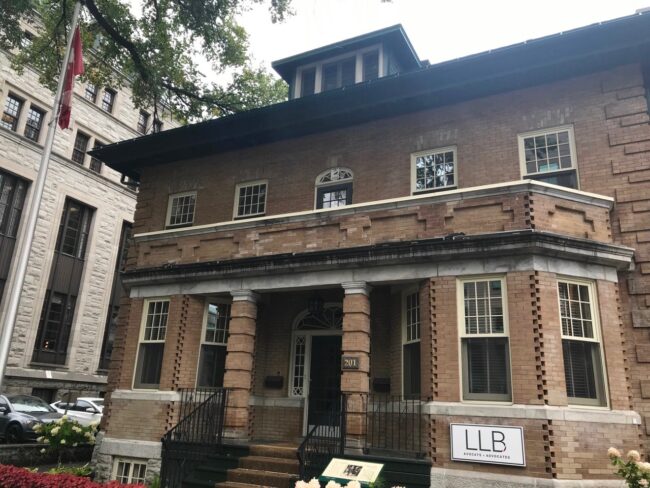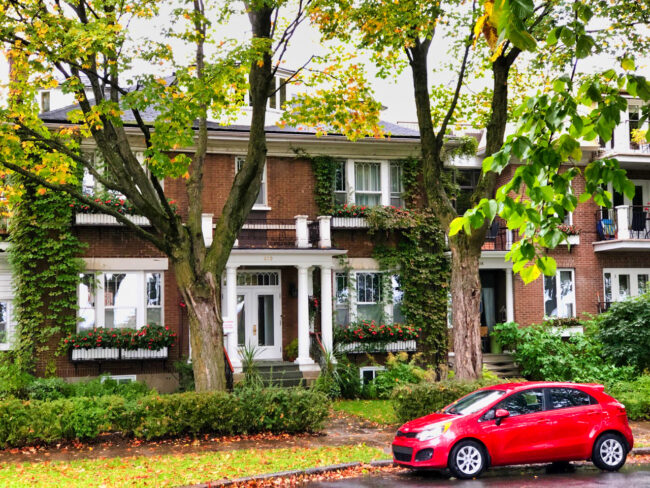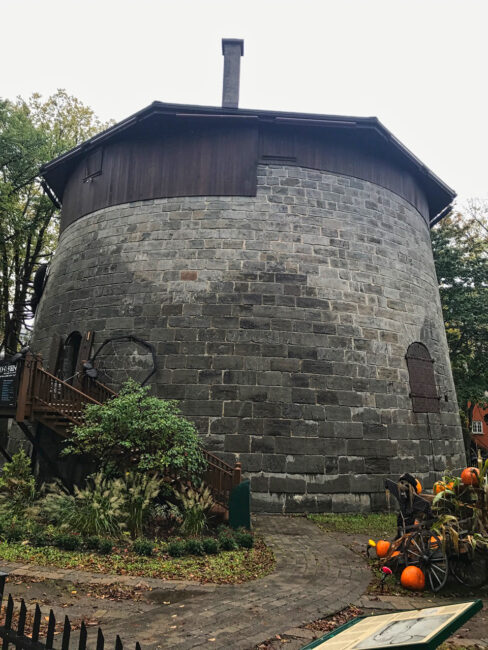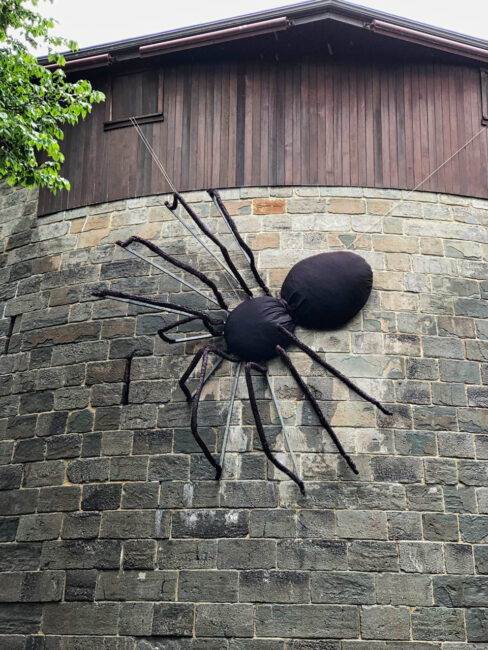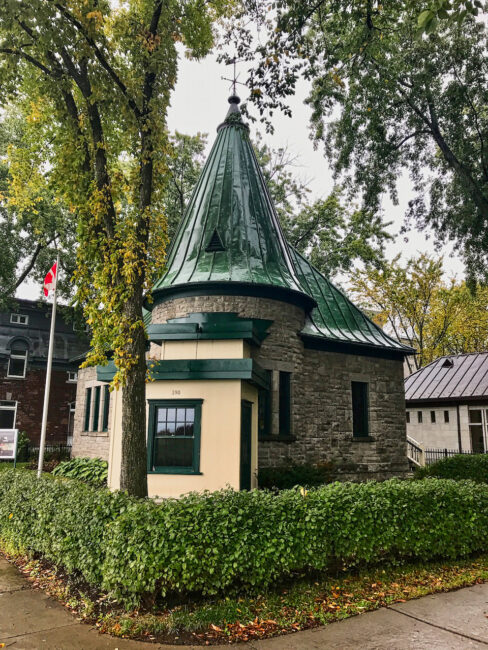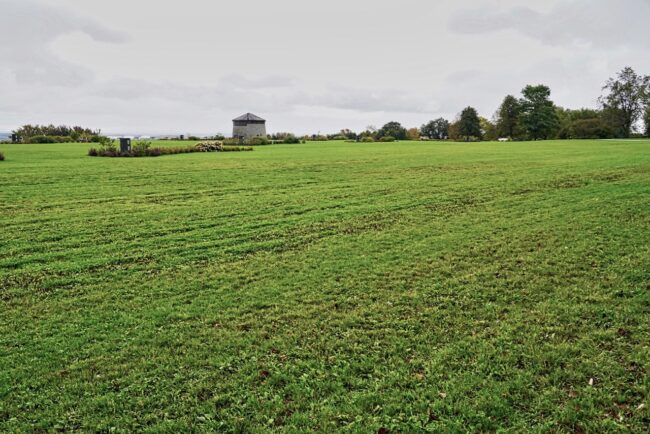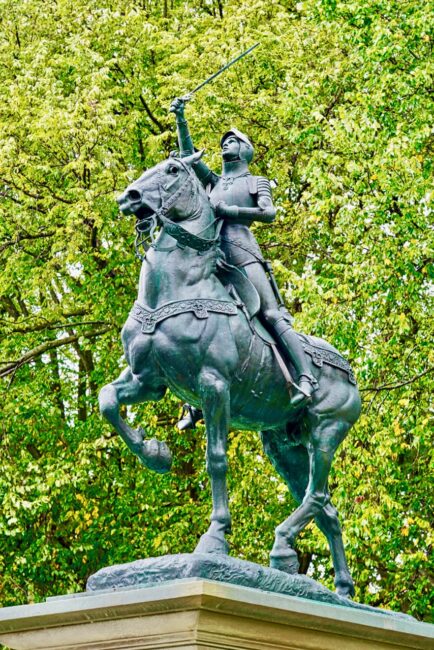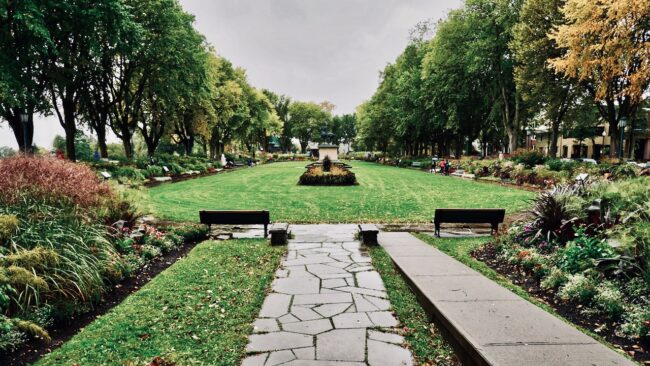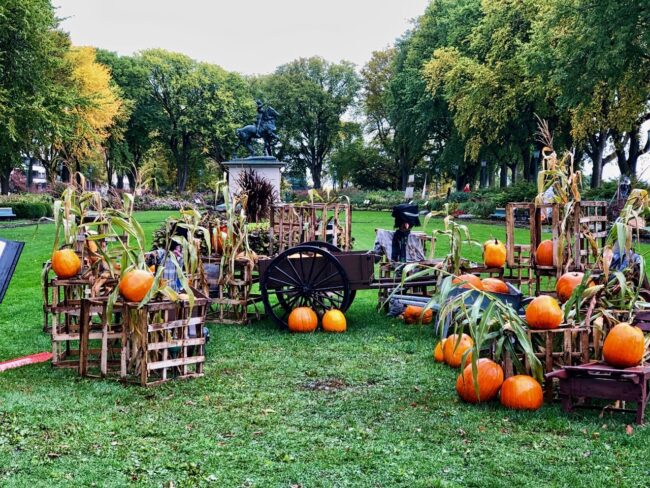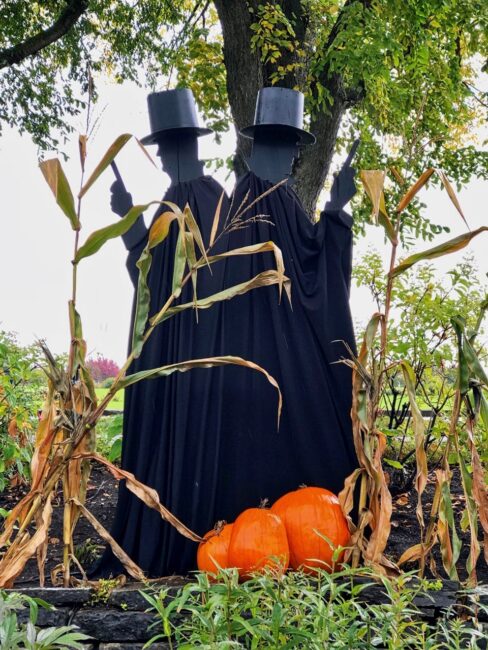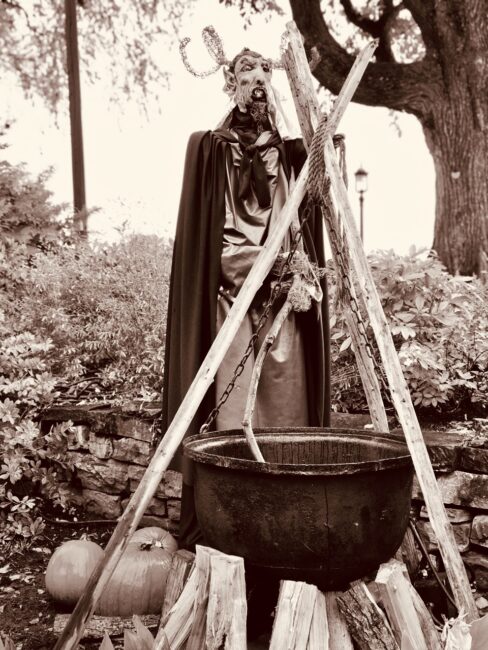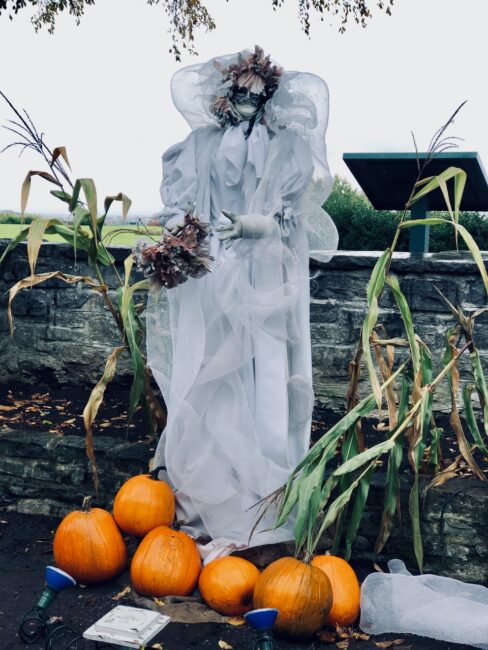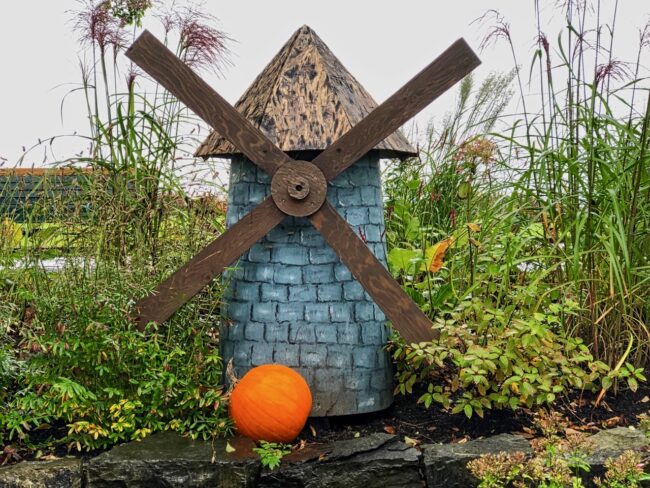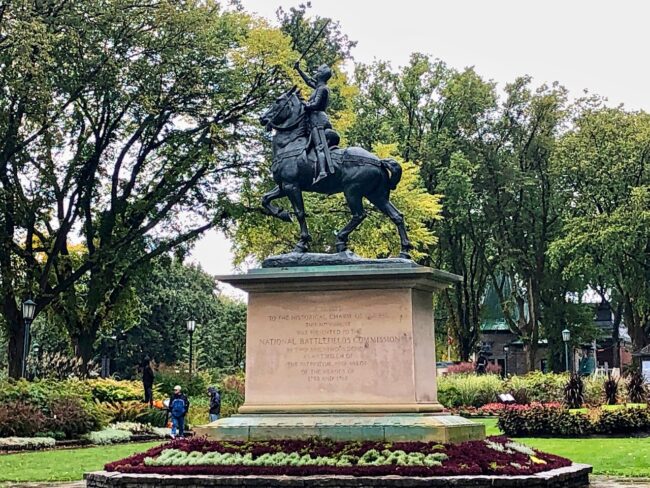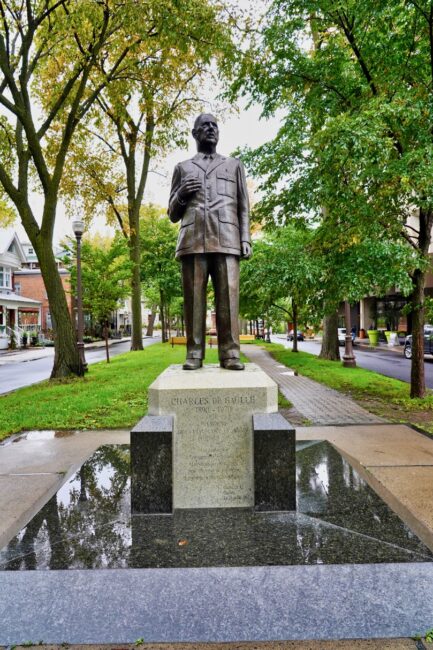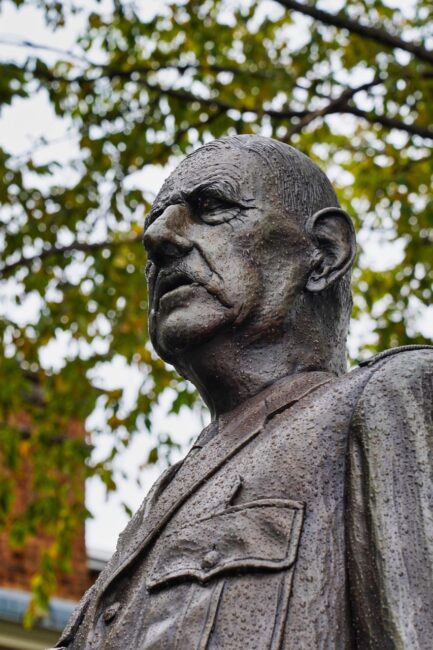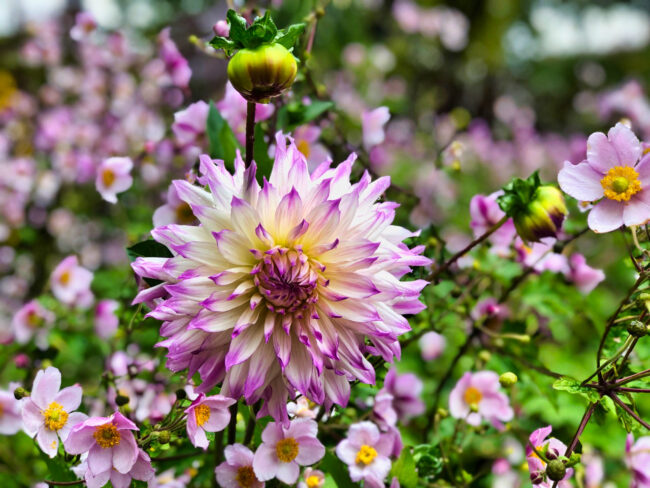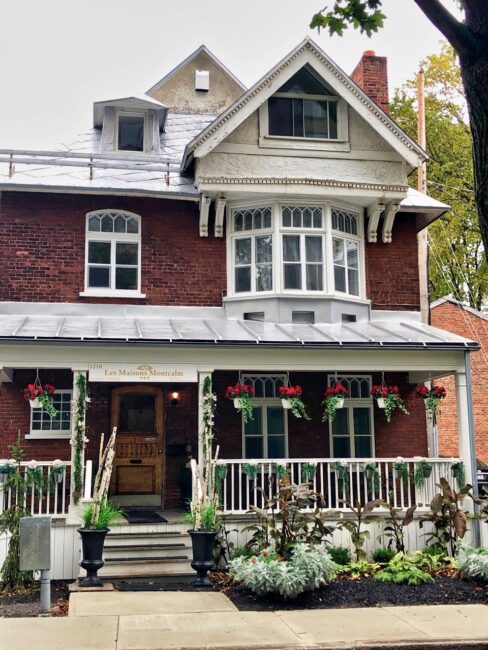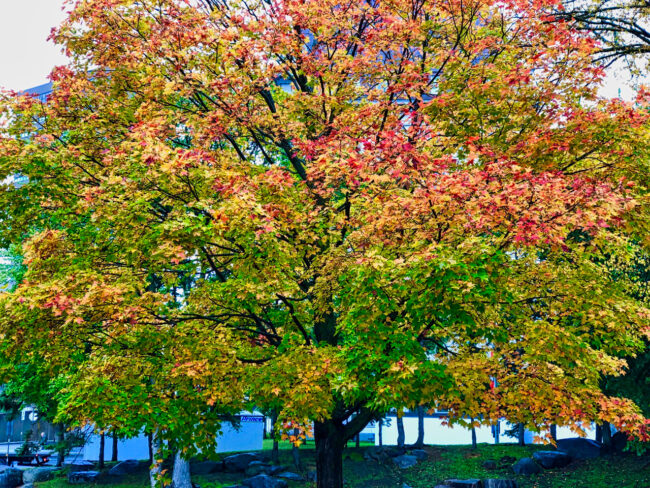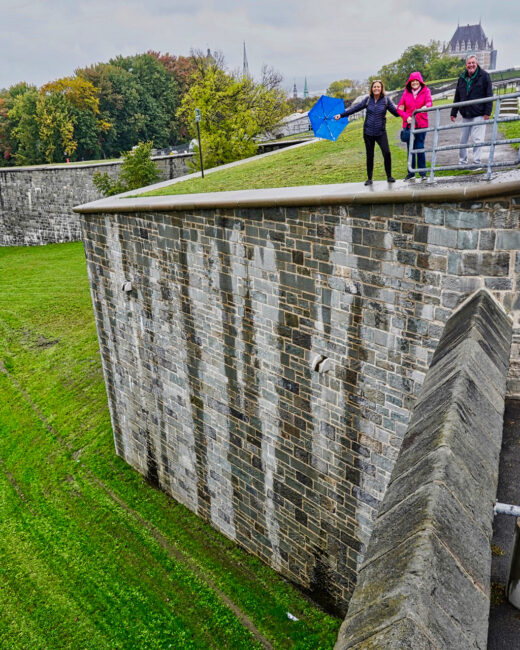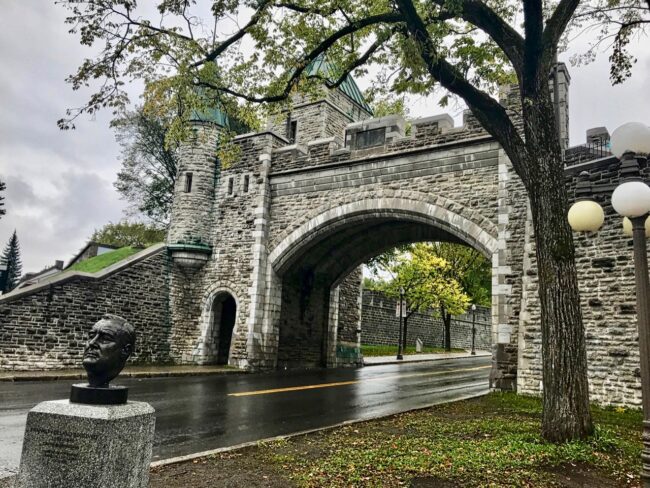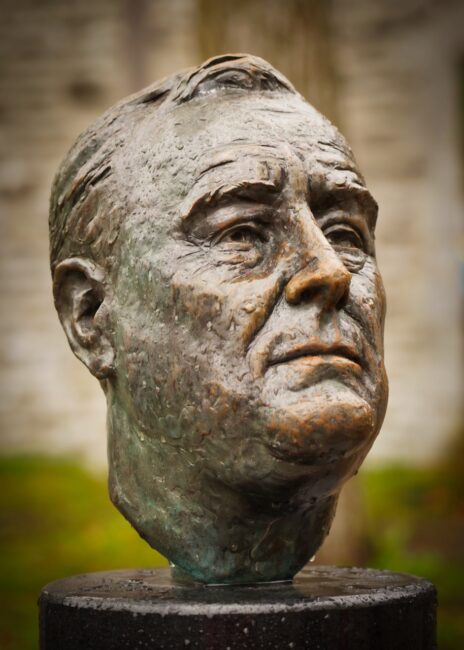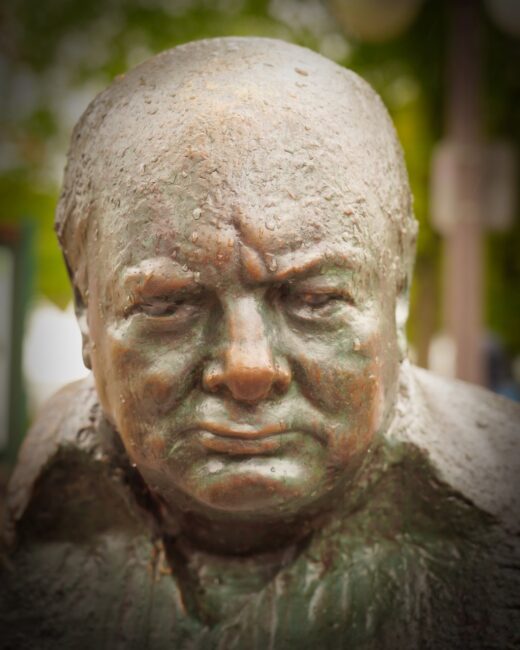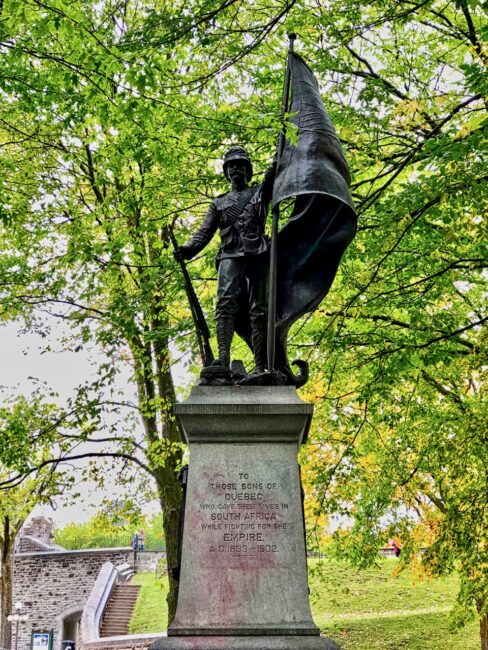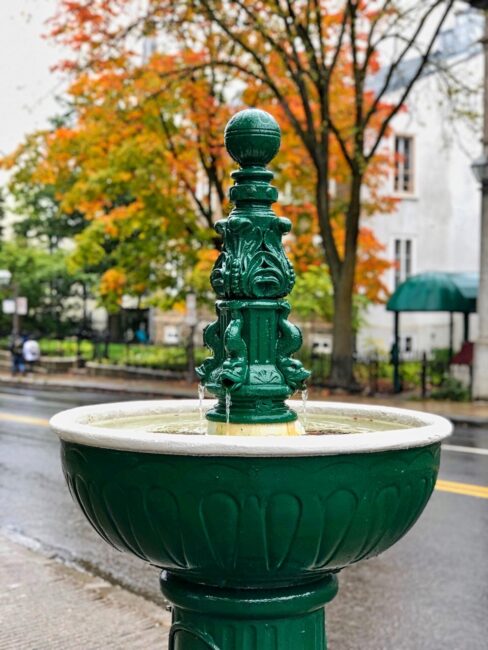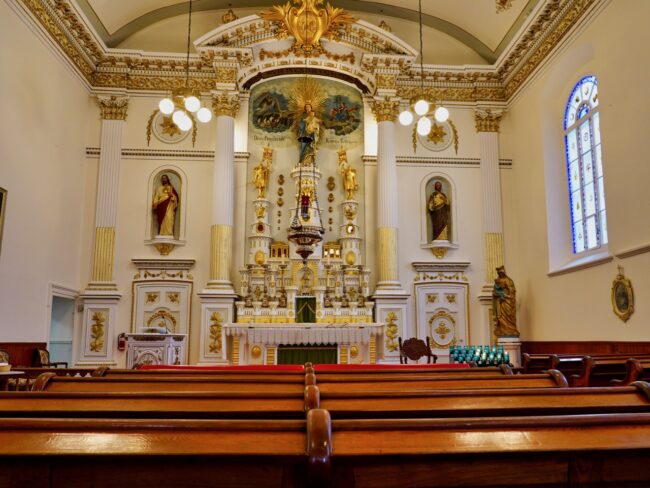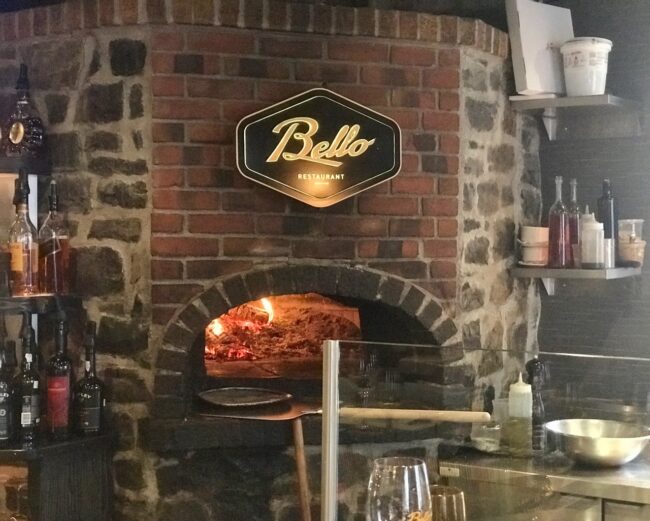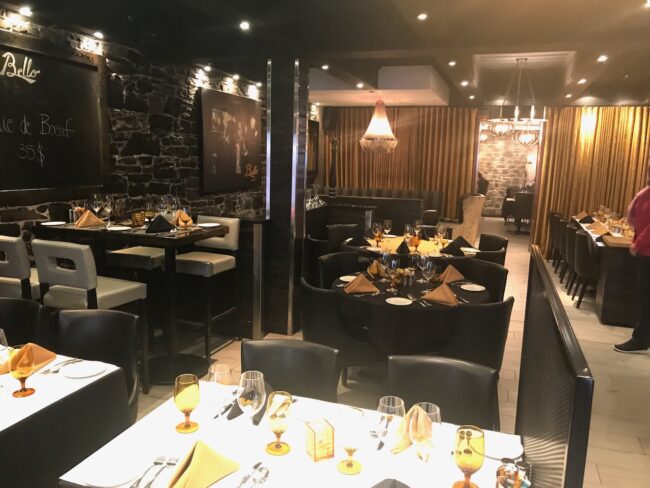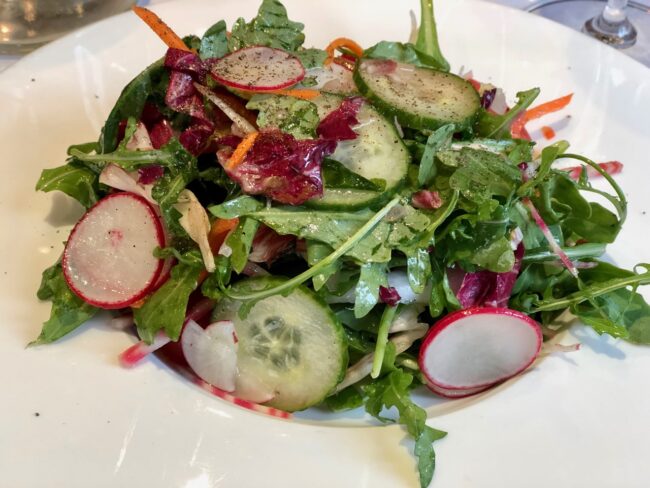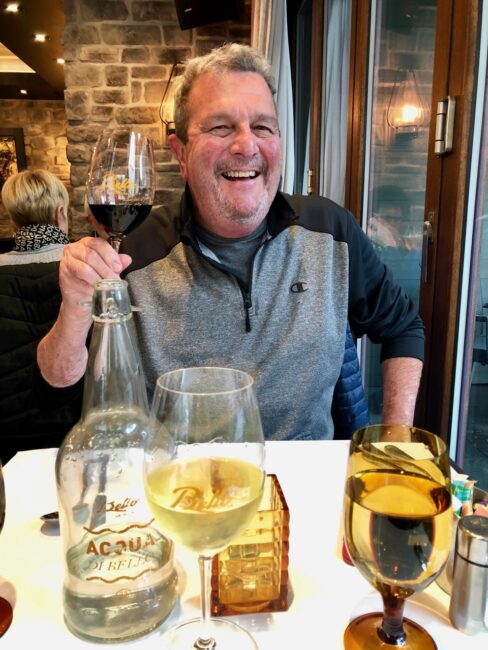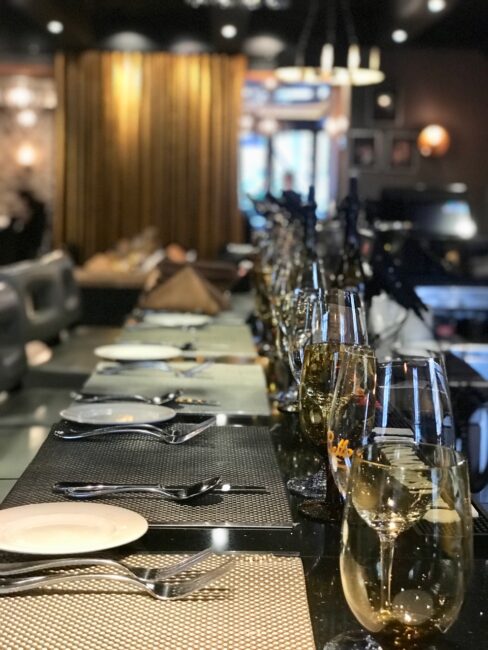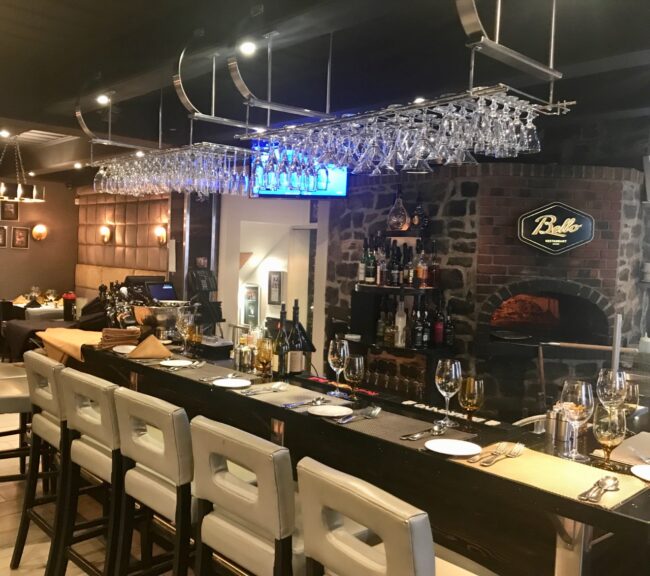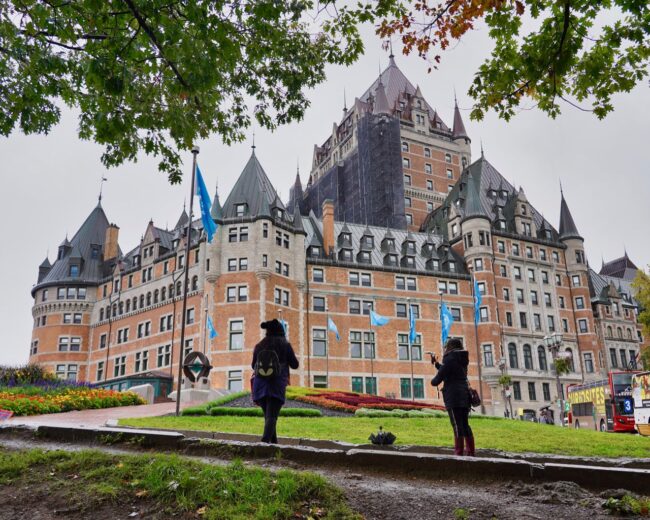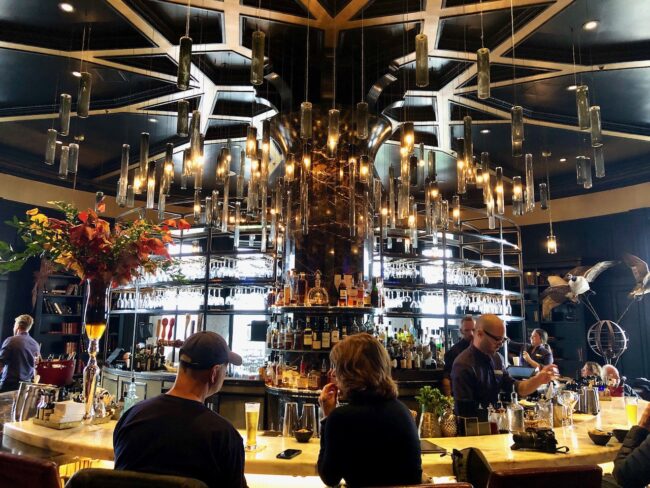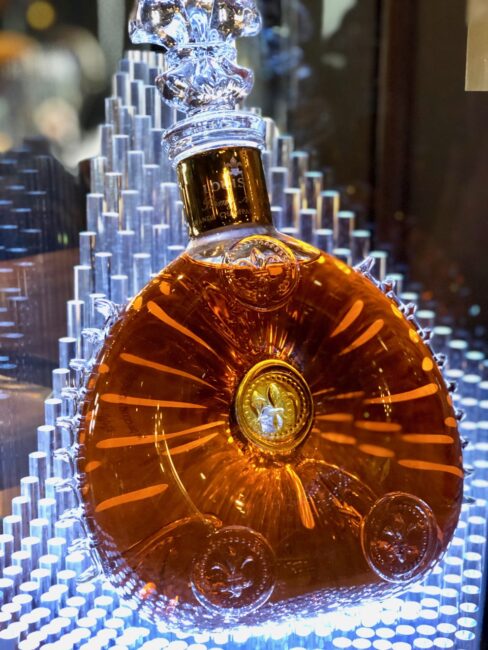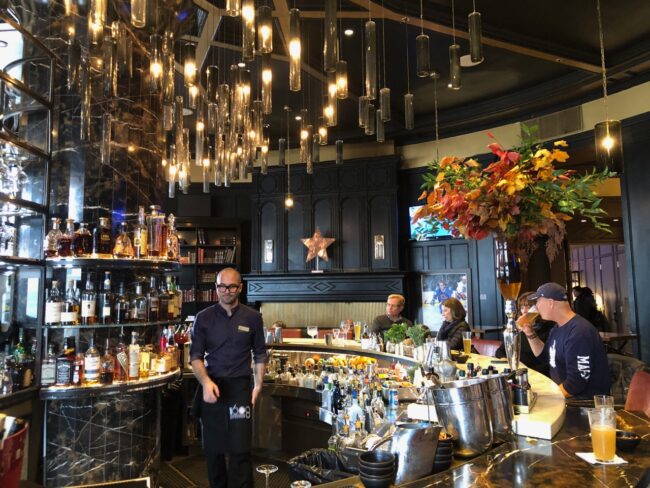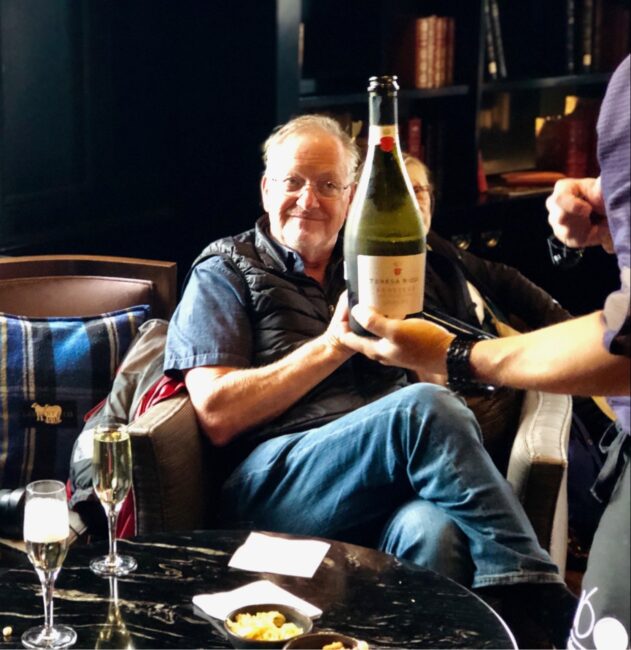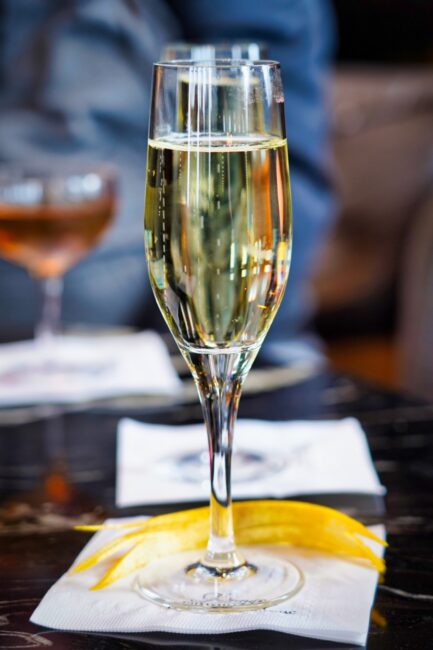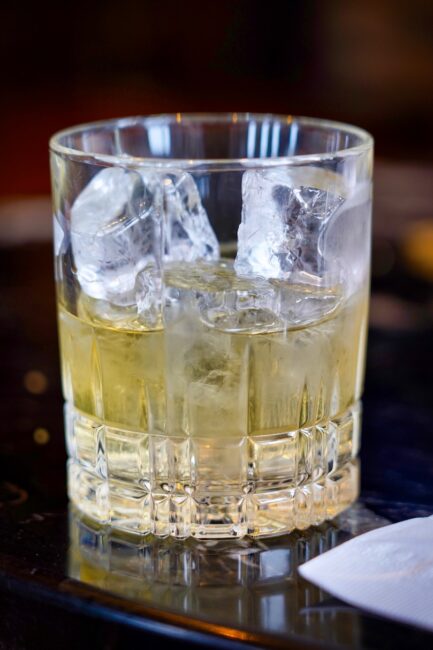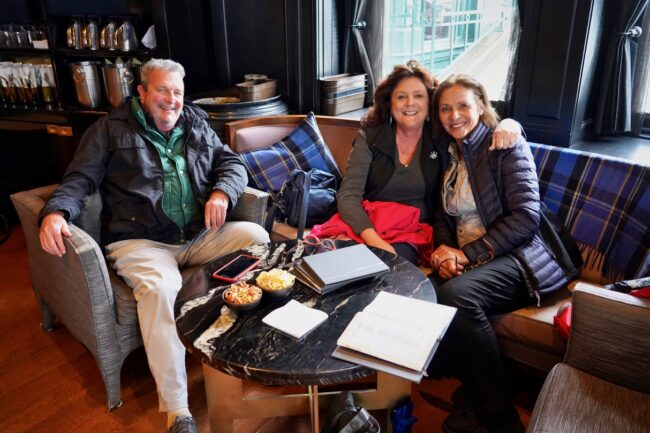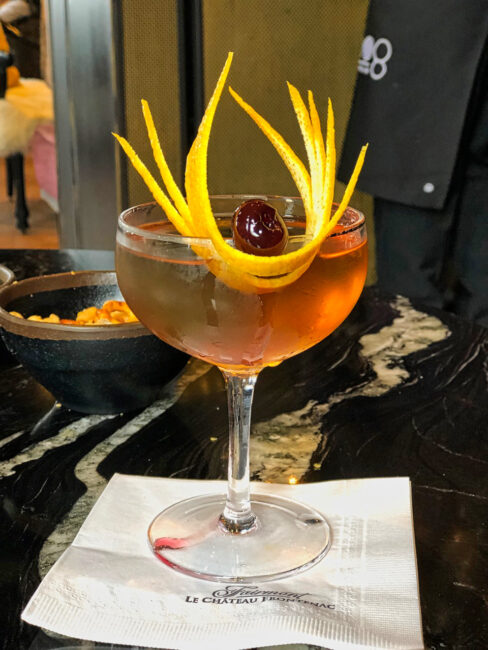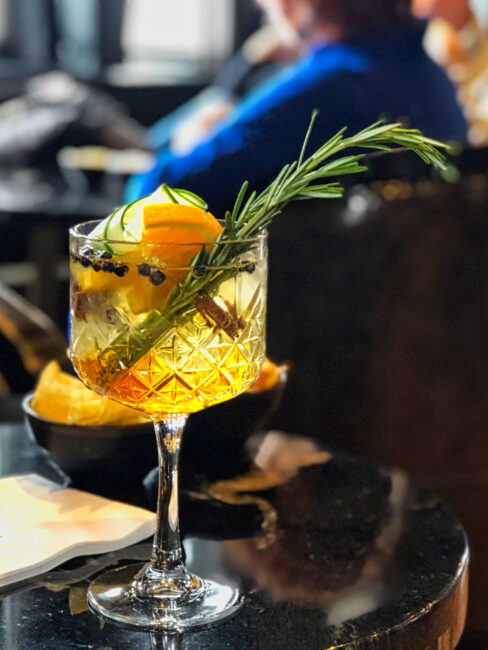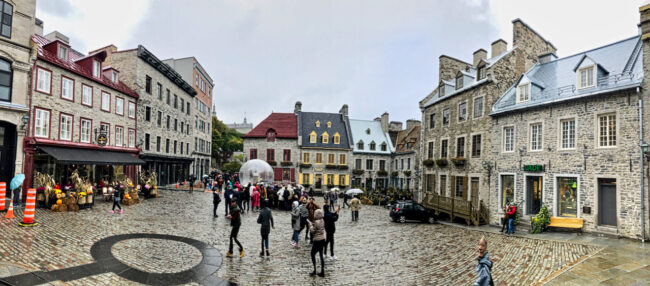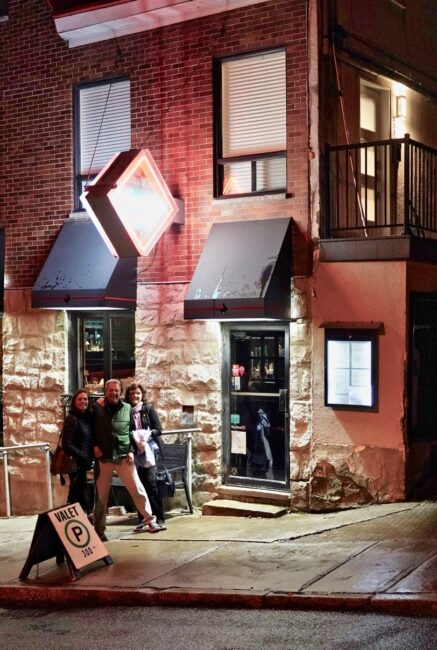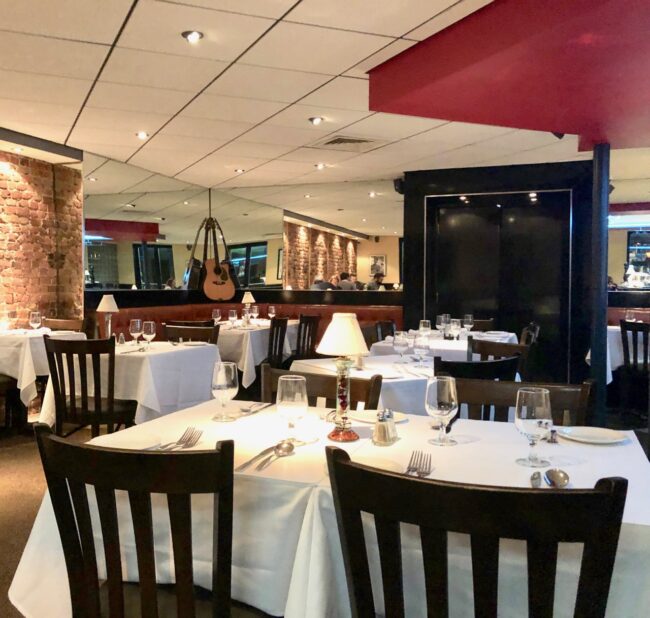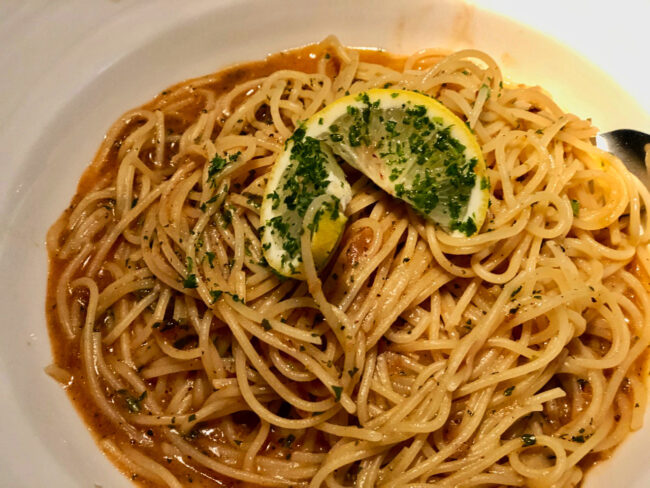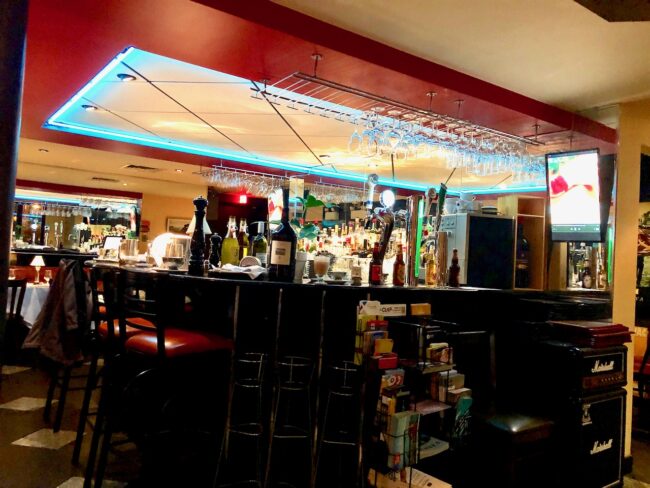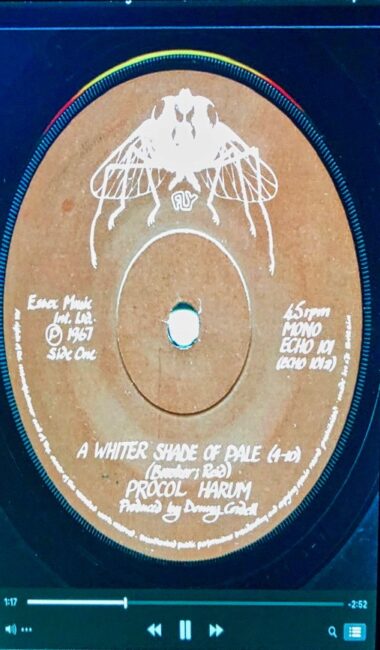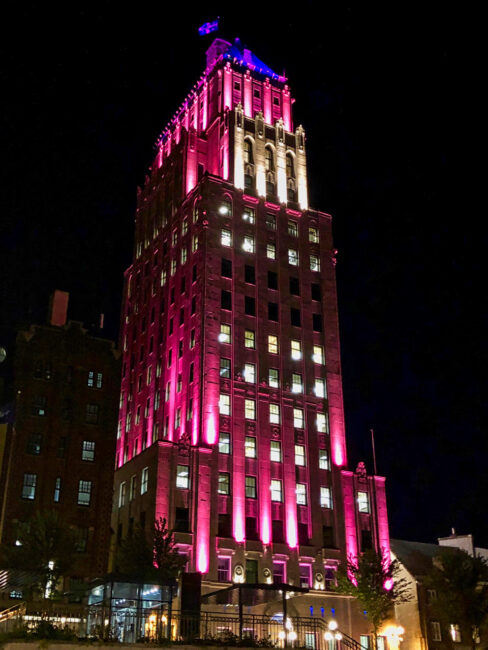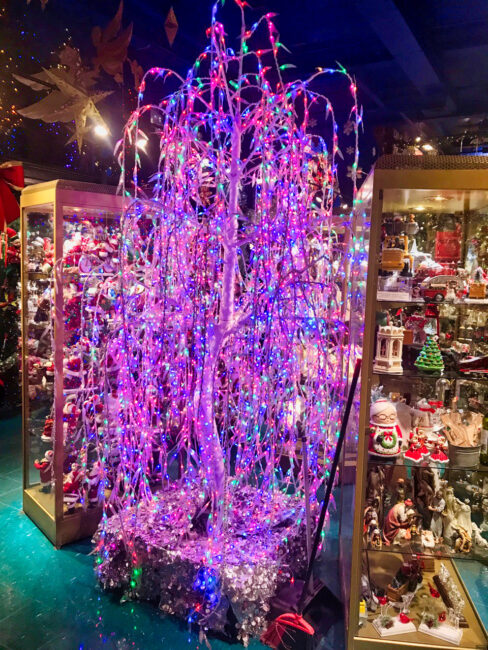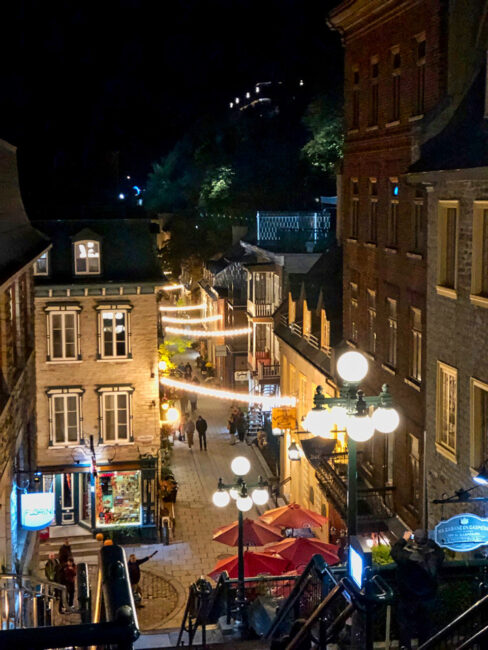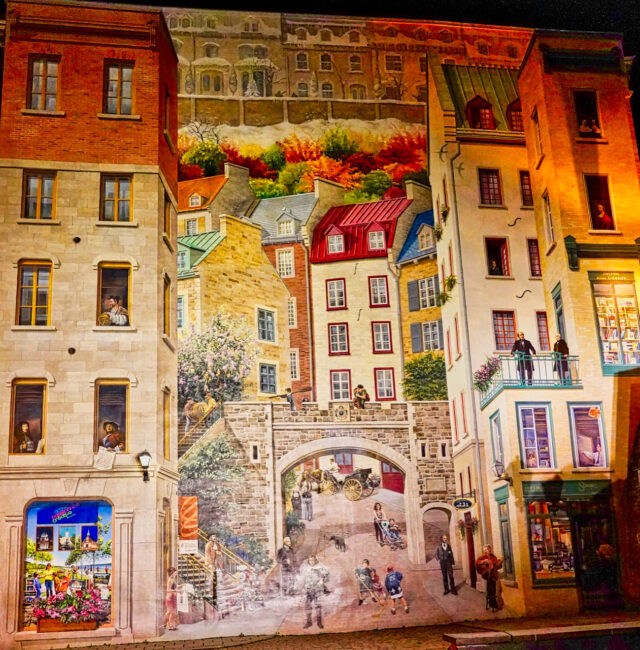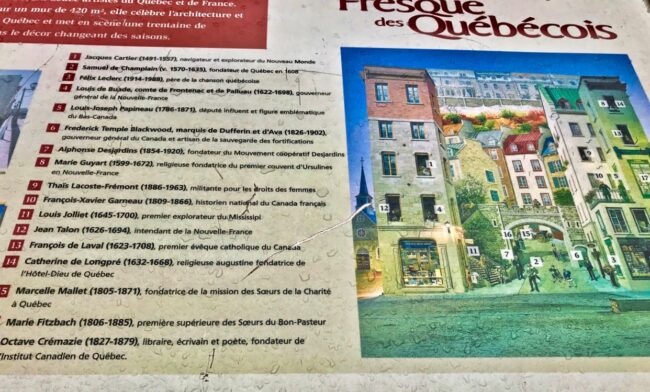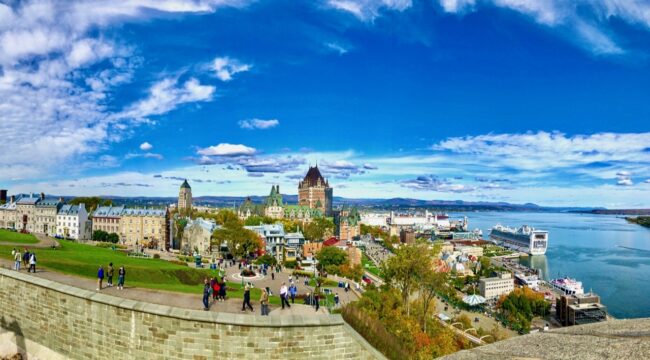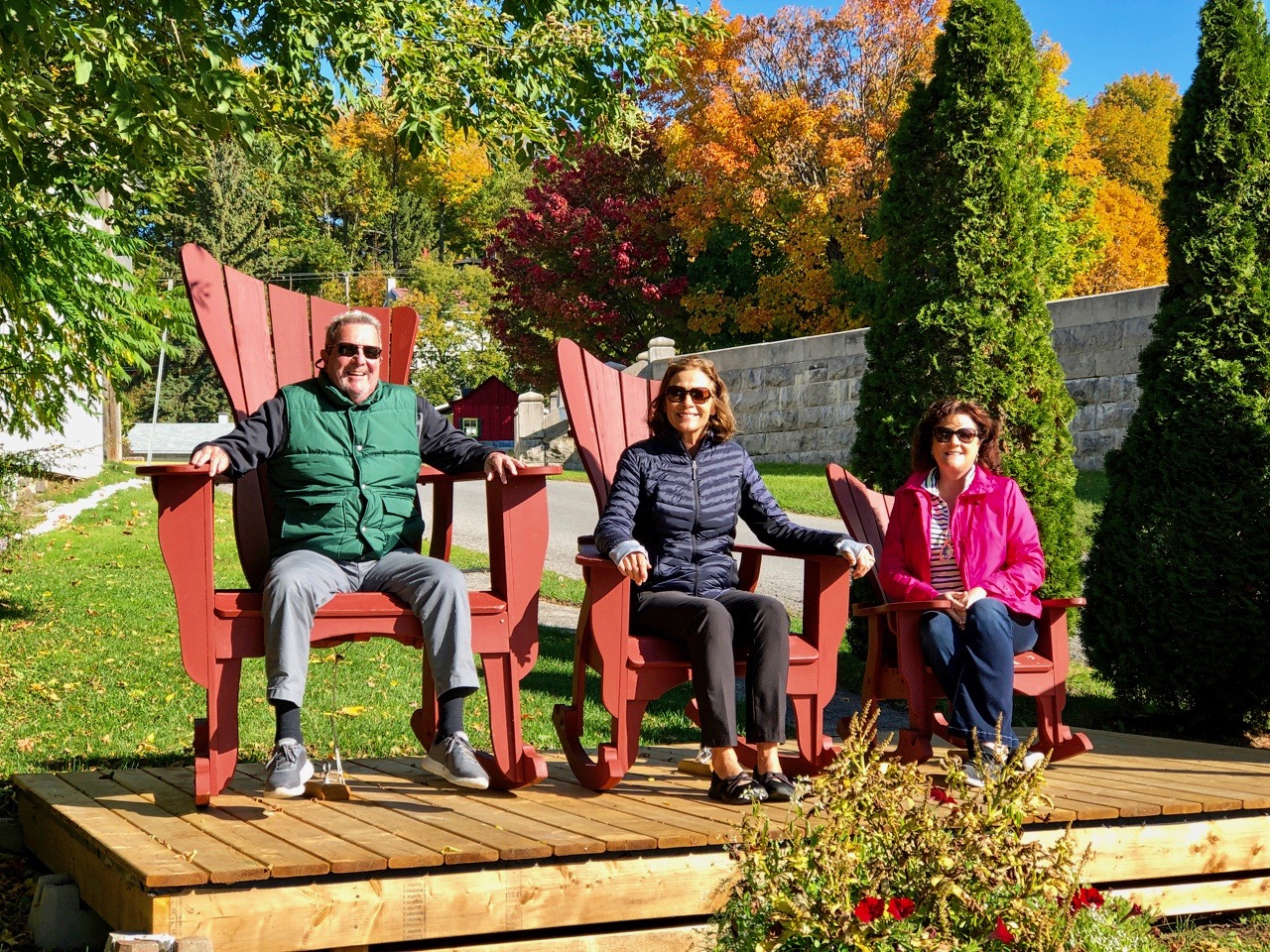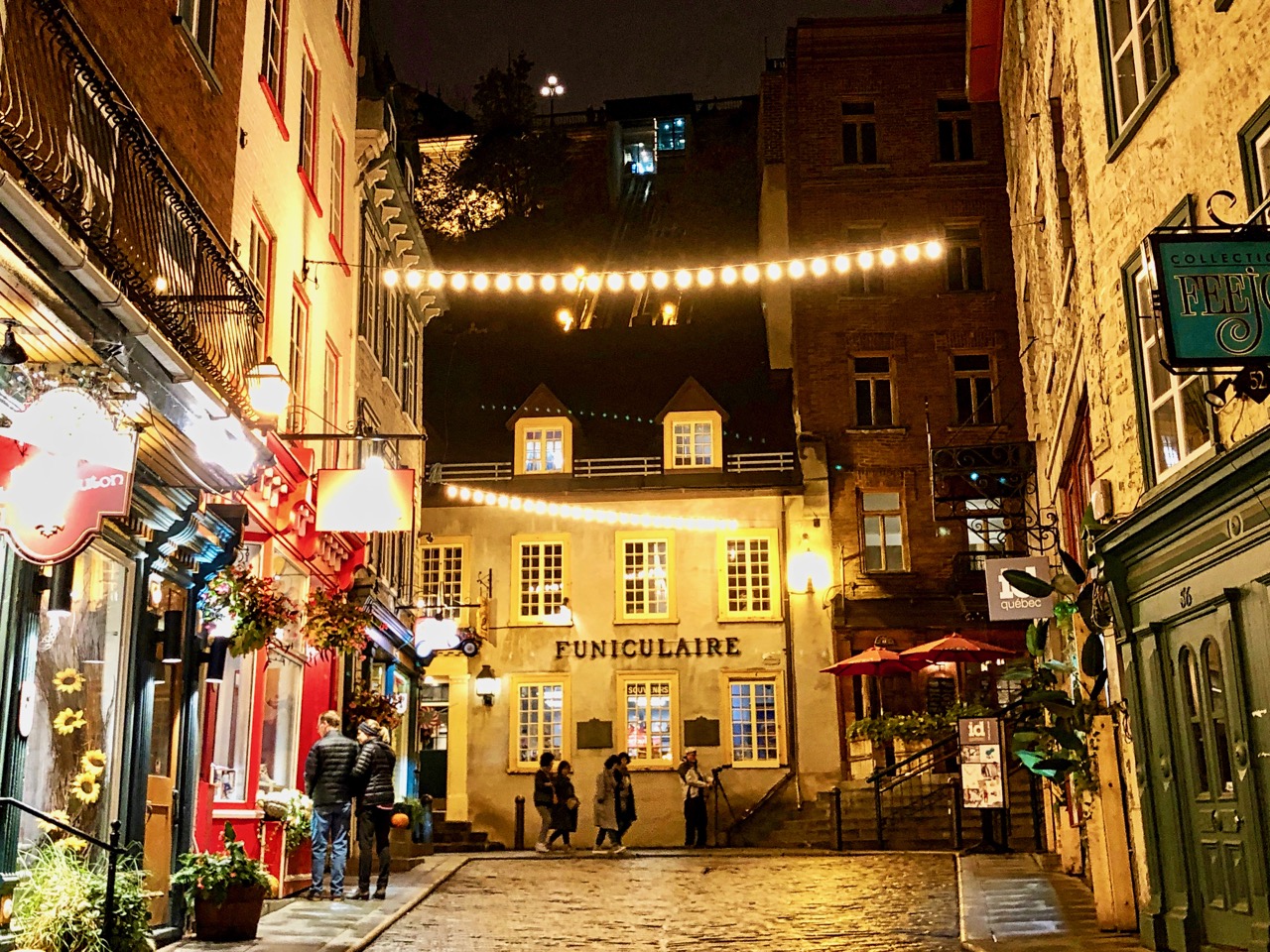
CHAPTER EIGHT: FEELING FRENCH IN QUÉBEC CITY
February 4, 2020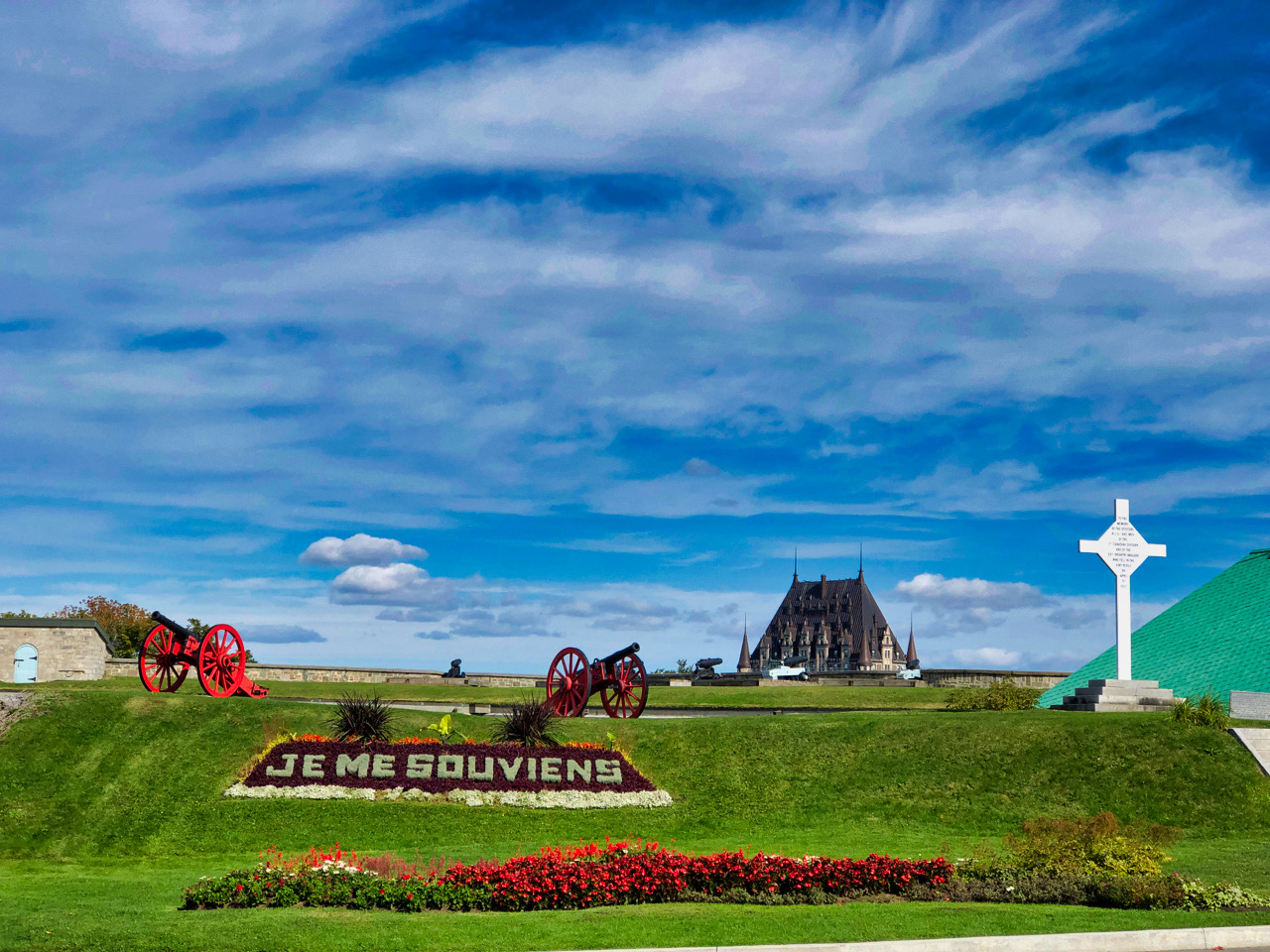
CHAPTER TEN: A QUÉBEC CITY CIVICS & HISTORY LESSON
March 19, 2020Colorful Québec: Mai Tai Tom’s 2019 Journey To Montréal & Québec City
CHAPTER NINE: FALLING FOR QUÉBEC CITY
Day Seven – Canadian History Lesson, Optical Illusions, Taking A Pass, The Battlefield Becomes A Golf Course, Halloween & Joan, Brrr!, I Know These Guys, Mist Opportunity, Bella Bello, Cocktail At The Chateau, Rainy Day Napping, Two Italians Are Better Than One, Hail Caesar (Part 38) & Downhill Is Harder Than Uphill
The forecast was rain free, so we were not surprised that it was pouring as we peered out the lobby of Hotel Priori on the way to the breakfast room. “Good to see that weather prognosticators in Canada are just as bad as ours at home,” I lamented. Unfortunately, they were correct on the temperature, a balmy 33 degrees Fahrenheit. Rain or shine, warm or cold, one has to eat, and we enjoyed the hotel spread of pastries, eggs, bacon, sausage, cheese, fruit and cereal along with copious amounts of caffeine.
A block from our hotel stood Musée de la civilisation, although we took a rather roundabout way to get to it so Tracy could take her requisite floral photos.
Musée de la civilisation opened in 1988.
The museum is not only laden with historical artifacts, but the area near it is an integral part of Canadian history. Early in the Revolutionary War, on New Year’s Eve 1775, during the Bataille de Québec (Battle of Québec), the American Continental Army suffered its first major defeat as it attempted to invade Canada (obviously the troops were short on maple syrup). Instead of spending New Year’s Eve in Times Square, General (and future traitor) Benedict Arnold led his men in a blinding snowstorm to Vieux-Québec where a battle occurred a couple of blocks from where the Musée de civilisation now stands. The battle didn’t turn out well for the Americans … Arnold was wounded, many were killed and about two-thirds of his men were captured. A plaque commemorates the event on the wall of the Musée de civilisation. (Arnold fared better than Major General Richard Montgomery. He was killed the same night in the Siege of St. Johns when he was hit in the head with Grapeshot fired by Canadian militia guarding the city).
Entering the lobby of this large museum, we knew it would be a Croc. Croc is a Québec satirical magazine which celebrated its tenth anniversary in 1989 by putting up this Time Capsule disguised as a “mailbox designed as a space shuttle.” Among the items inside the time capsule is one of Céline Dion’s handkerchiefs, which is certainly nothing to sneeze at. Supposedly, it was a Titanic affair.
Also in the lobby, of more historical interest, is an 18th century Longboat, a main means of transportation back then. Three Longboats were discovered in 1985.
Although you could take a tour, we decided to wing it.
Upon entering the actual museum ($17CAD), we visited the first permanent exhibition, “Our Story: First Nations and Inuit in the 21st Century.”
There are numerous displays throughout chronicling the “11 First Nations in Canada.” We could tell they were trying to drum up some business.
Numerous small Inuit sculptures could be seen …
.. and there were plenty of artifacts to take in along the way.
I first thought these were weirdly shaped Canadian tennis racquets until Kim informed me they were actually snowshoes.
Tea drinking was just as important to the Brits in French Canada as this 18th century ceramic Wedgewood cake or cheese bowl shows (can’t have tea without food).
Seems Canada has had its fair share of racism, too. As the card read, “Europeans began romanticizing the indigenous people of North America … as a result, Abroriginal young people are constantly confronted with a narrow and biased image of themselves. Many commercial products still attest to this phenomenon even today.”
In a matter of minutes, tragedy nearly took the lives of three-fourths of our California exploration party in an area that seems like it’s mostly for kids … and kid-like adults. For some reason, Tracy, Mary and Kim decided to climb a building and then had to hold on for dear life. As I calculated Tracy’s insurance worth, I realized this was just an optical illusion, and my future life with Shania Twain would now only be a pipe dream.
The other permanent exhibition, “People of Québec . . . Then and Now,” looks back more than four centuries with items such as flags, clothing, furniture and musical instruments. We spun around this 1940 Wurlitzer Jukebox and boogied on. I passed by the statue of Canadian statesman Sir George-Étienne Cartier, who we learned was not a relation to Jacques Cartier, the explorer who claimed Canada for France and is also credited with naming the country Canada.
In a puzzling development there in front of me stood hockey legend Maurice the “Rocket” Richard, who helped the Montréal Canadians win eight Stanley Cups. He even signed the puzzle, which I assumed originally was packed in a Penalty Box.
After wandering through the remaining displays, we exited and walked a short distance in the cold and rain to catch an Uber to the Musée Nacional des Beau Arts du Québec, situated on the Parc des Champs-de-Bataille (Battlefields Park).
We looked at the brochure for its Greatest Hits Tour, and the four of us unanimously concluded we weren’t in the mood for any more museums on this day.
We stopped next door for a quick look at the Neo-Gothic Église Saint-Dominique. The first Mass was held here on Christmas Day, 1930.
Not to be confused with Kirstie Alley, we were now meandering through the Grande Allée, in one of the most upscale parts of Québec City. Gorgeous homes and colorful fall foliage made us almost forget it was raining, well, until I stepped in a large puddle.
We passed by the Louis S. St. Laurent Heritage House, which was built in 1913. St. Laurent was a prominent lawyer and became Minister of External Affairs (the same post held by numerous politicians in the U.S.). He then became a leader of the Liberal Party and became the Prime Minister of Canada from 1948 to 1957. The house received heritage value and was recognized for such in 2001.
We saw a sign for the Plains of Abraham, made a quick right and once again stately homes were the order of the day.
But there were other smaller structures that caught our eyes. In the early 19th century, the Brits feared the Americans would attempt to annex Lower and Upper Canada, so they built these Martello Towers to prevent them (or other invaders) from attacking existing fortifications.
Looking at this structure, I believe the British also thought Americans were scared of spiders.
We were nearing the famed Plains of Abraham.
The Parc des Champs-De-Bataille-Plaines of Abraham lay ahead where a number of battles between the British and French took place. The park is named after Abraham Martin (but not John), who used the plains as a pasture for his cows. It was the site of the Battle of the Plains of Abraham, fought in 1759 as part of the French and Indian War. It was the defining confrontation between the French and British Empires in North America.
Mai Tai Tom Fun Fact: In 1874, the British created The Quebec Golf Club. They “built a 14-hole course on the Plains of Abraham at what used to be called the Cove Fields, between the Citadel, the Grande Allée and Martello towers 1 and 2. A farmer’s cows were originally used to cut the grass, a job which was taken over by a horse-drawn mower in the 1880s.” Since it was only 14 holes, I might have been able to shoot less than 100.
A lovely park loomed close by. You didn’t need to see the name of the park to know who it is named after.
The rectangular Parc Jeanne d’Arc combines the French classic style garden with British-style beds. Luckily, I didn’t see any stakes. The rectangular garden was designed in 1938 and contains more than 150 species of “annuals, bulbs and perennials.”
Another Mai Tai Tom Fun Fact: The Canadian National Anthem, O Canada (originally called “Chant national”), was played here (before it became a beautiful park) for the first time on June 24, 1880. The lyrics have been amended numerous times, and it became the officially adopted national anthem of Canada in 1980.
You could easily surmise it was nearing Halloween by the decorations and vignettes surrounding the park.
Since we were in Canada, I knew this duel could not have been between Alexander Hamilton and Aaron Burr, however with the very cold temperatures we ere experiencing, one of those guys might be Aaron Brrrr.
These two made a lovely couple. Each vignette was accompanied by a story.
We left the park and started back toward the Grande Allée.
In a couple of minutes we stood at a monument for the late French president, Charles de Gaulle. This statue was erected 30 years after he had made his speech at Montréal’s City Hall (see Chapter 2) supporting the province’s independence. There were both cheers and jeers on the day the statue was erected.
We continued through this charming, colorful neighborhood …
… toward La Citadelle de Québec, constructed at the behest of the Duke of Wellington. It seems Wellington had a beef with the Americans, who he thought would attack after the War of 1812. We popped into the nearby Plaines of Abraham Museum but passed on it as we had decided to tour the Citadelle on the following day when the weather was supposed to clear up after our scheduled early tour of the nearby Parliament building.
We walked some of the ramparts, where Mary decided she would have Kim take one of those vacation pictures where people plummet to their death, and people on the internet laugh at them. “Haven’t you had enough danger today?” I yelled. Somehow, Mary made it safely back to California unscathed.
Kim said, “Let’s go see the St. Louis Arch,” which made no sense since we were nowhere near Missouri (or as Donald Trump calls it, “Kansas”). As it turned out, Porte St. Louis is one of the gates of Québec City’s ramparts (remember, it’s the only remaining fortified city in North America). Having more lives than a cat, the gate was built in 1694, demolished in 1791, rebuilt shortly thereafter, demolished in 1871 and finally, this arch was built again in 1880. This gate has had more cosmetic surgery than Wayne Newton.
Nearby are the busts of FDR and Churchill. This monument commemorates the 1943 and 1944 visits to Québec City of the British prime minister and U.S president where the two participated in conferences to discuss how to end World War II.
There was also a monument to those who “gave their lives in South Africa while fighting for the EMPIRE” from 1899-1902.”
We were back on the Grand Allée searching for a lunch place, but nothing was calling our name.
Kim and Mary decided to head back to the hotel, via a church, and dined at the restaurant next to our hotel, where they had crepes and poutine. Damn, I was still poutine deprived at this juncture.
Meanwhile, Tracy and I wandered until we lucked into a fantastic Italian restaurant called Bello (73 Rue Saint Louis). We had reservations for Italian food later this evening, but really, can you ever have too much pasta?
Bello’s beautiful decor made this a pleasant spot to enjoy a meal, and since it was nearly 2 p.m., it was relatively empty. We loved their playlist, which we learned was Sirius Chill Radio (no wonder I was relaxed). I started with a fantastic Prosciutto e Melone, and finished with a half order of pasta with a spectacular Iberian chorizo with spring peas. Wow!
Tracy opted for the arugula salad and a tasty Minestrone (perfect for a rainy day).
As you can tell, I quite enjoyed my Italian Sangiovese, as well.
We definitely needed to bring Kim and Mary back here tomorrow.
Well, what do you do after a relaxing lunch with vino? We met back up with Kim and Mary for cocktails at Fairmont Le Château Frontenac …
… in the classic 1608 Bar à vin et fromage.
Luckily, we were able to grab the last available table (near the gorgeous bar). Tracy and Mary were considering champagne, but our affable server (who told us he is transferring to California so he can surf) told them he very much enjoyed the Prosecco. Being equal opportunity bubbly girls, they went with his recommendation.
Kim decided on an Irish whiskey, while I once again took Manhattan.
Tracy surreptitiously attempted to take long range photos of the two colorful cocktails at the table adjacent to us. Finally, we just asked them if they minded us taking a couple of photos, and they were amenable.
We did a little window shopping, and in a moment of compassion, I acquiesced to the group’s plea for a nap. I’m becoming a real softy in my old age. So down the funicular we traveled, walked back to the hotel and, truth be told, I really enjoyed laying down for awhile (hopefully none of my traveling partners will read this part or it might become a vacation trend).
A little after 7 p.m. we caught an Uber to Ciccio Cafe (875 Rue de Claire-Fontaine) which is located just a tad off the beaten path. It was quiet on a Wednesday night and like most every restaurant we had dined, the playlist was great and not intrusive. The interior, itself, was charming.
The dinner, service and ambiance was perfect and I throughly enjoyed my Spaghetti al Limone (I told you … you can never can have enough pasta). The bottomless house wine didn’t hurt either. Thankfully, Kim was able to order a Caesar Salad.
Loved this machine where the owner would select his music. I need one at home. By the way, you can’t go wrong with Whiter Shade of Pale on your playlist. Fortunately, Tracy, who loves this song, now knows the group’s name is not Protocol Harlem.
Afterward we had Uber drop off us at Basilique-Cathédrale Notre-Dame de Québec, so we could do a little more window-shopping, and the three of them watched to see if I fell down the steep stairs back toward our lodging location. We believed the tall, pink skyscraper was the Édifice Price (no relation to Vincent), constructed in the early 1930s. It’s the tallest building in Old Québec’s historical district.
One last window-shopping experience and it was time to carefully descend the stairs.
Safely back down the stairs, we looked out at the quiet street in Vieux-Québec devoid of the cruise crowd and headed back for sleep.
On the way, we looked once again at the historic Fresque des Québécois.
If you want to impress friends who might travel with you to Québec City, memorize this before you go. You can be a real name-dropper.
With good weather forecasted for the following day, we needed an early start because Kim had secured 9:30 tour reservations at Parliament. We would then head over to the Citadelle and its museum, while also taking another very interesting guided tour.
After lunch, we stopped in a former prison, which is now a library and walked through an alley of artists. We made plans for a bus tour the following day, rode down my now favorite means of Québec City transportation and discovered a pub that denotes what a pub should be.
Our dinner would consist of Boreal cuisine, a cuisine we knew nothing about. But when in Québec City ….
NEXT – CHAPTER TEN: A QUÉBEC CITY CIVICS & HISTORY LESSON
Day Nine – A Visit From The Sun, Parliamentary Procedure, Behind Closed Doors, “I’m Making Bombs”, Hilarious (And Informative) Tour Guide, Rachel Takes A Shot, Don’t Paint The Goat Blue, Marvelous Views, Prison Time, The Chardonnay Shut Out, Prison Time (Part Deux), A Penny For Your Thoughts, Art Alley, Pub Stop and Changes In Latitudes, Changes In Attitudes

